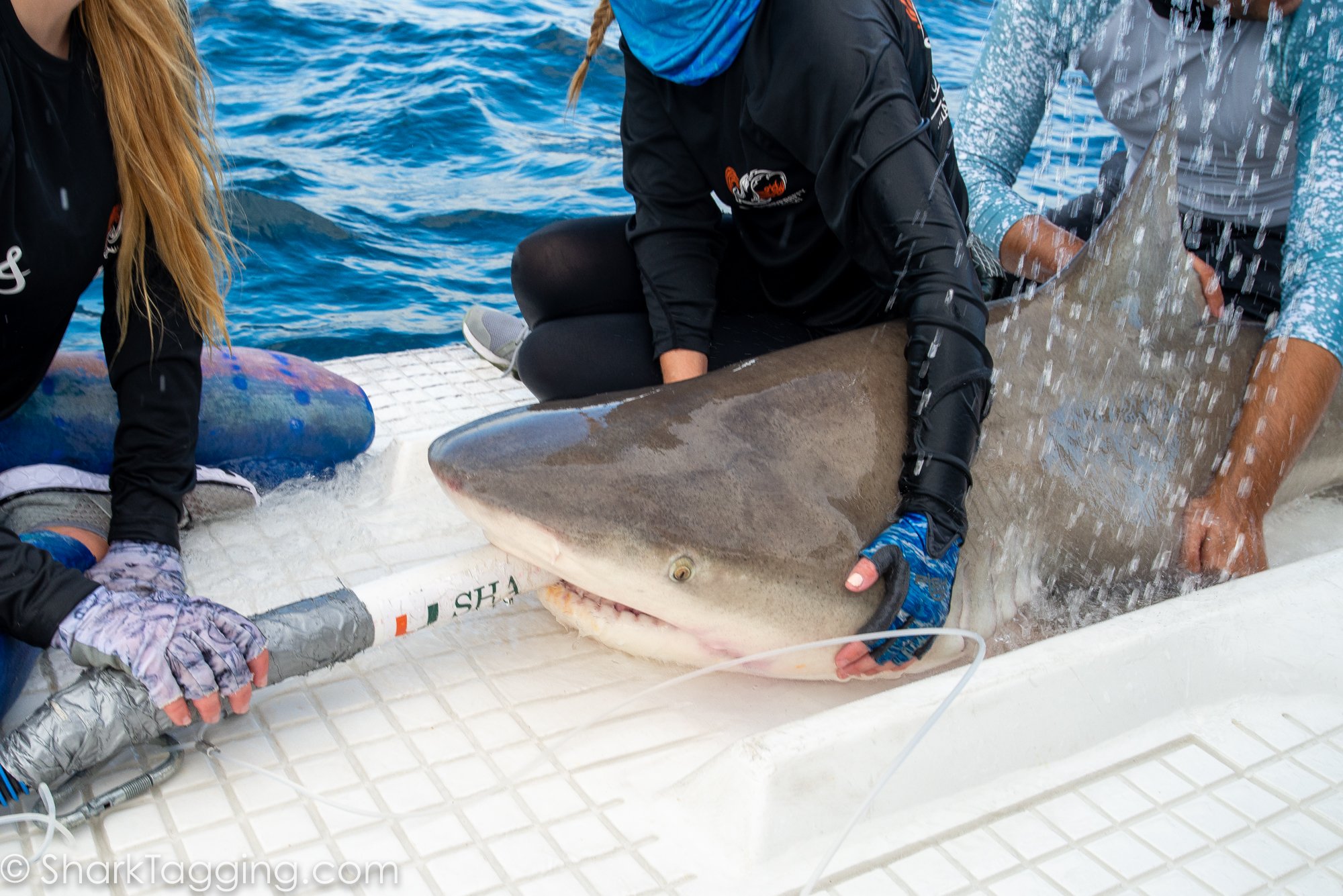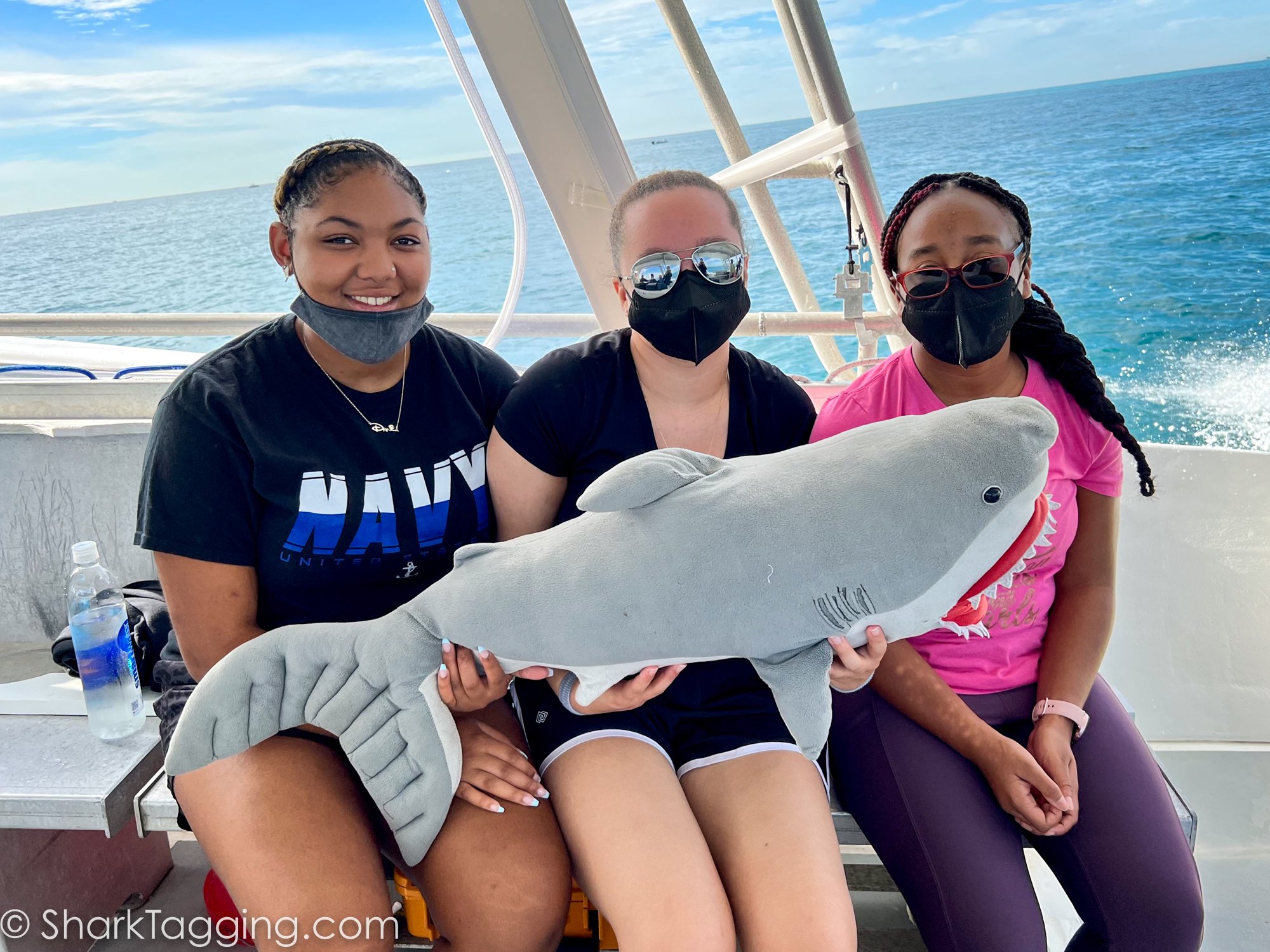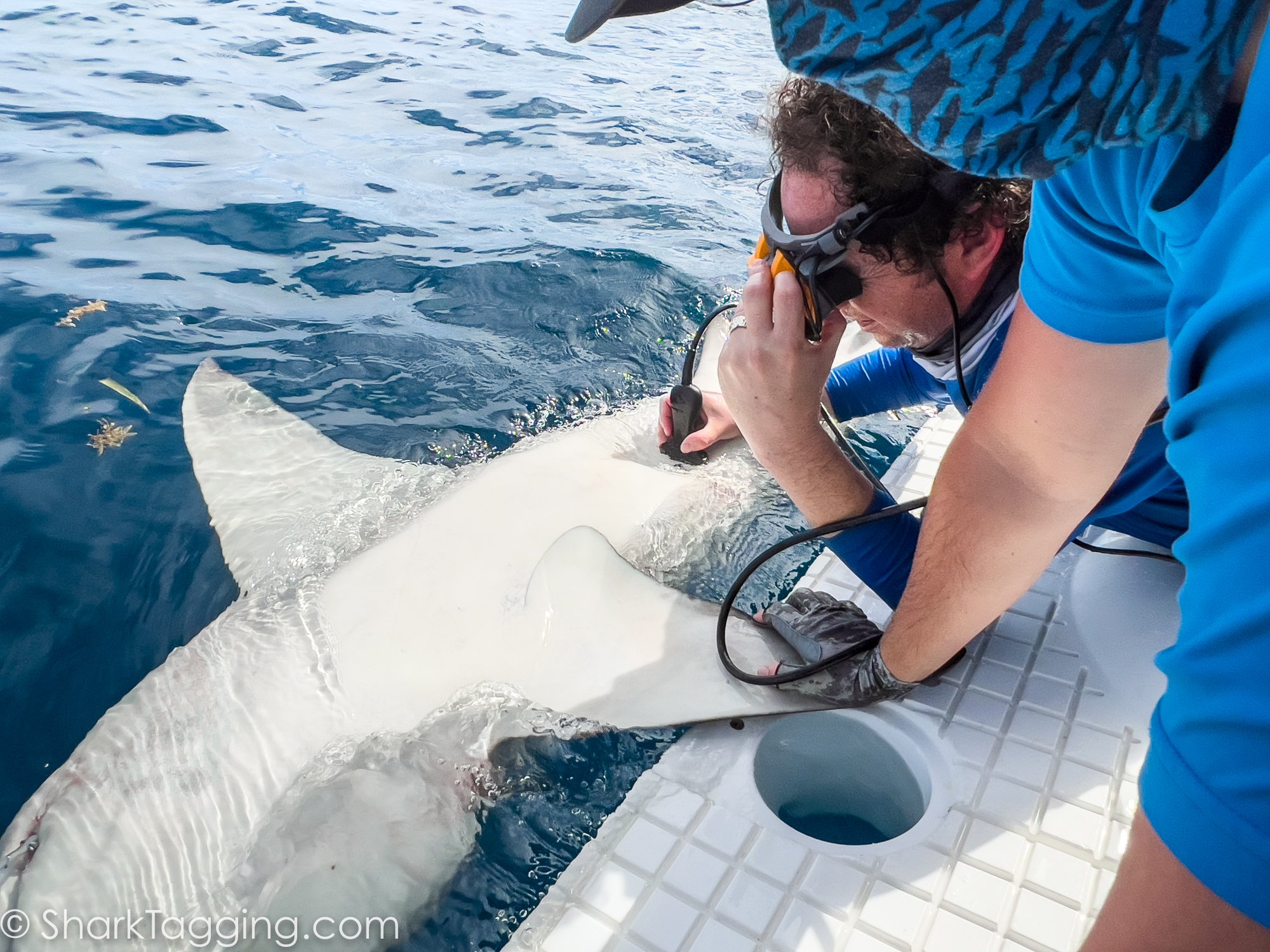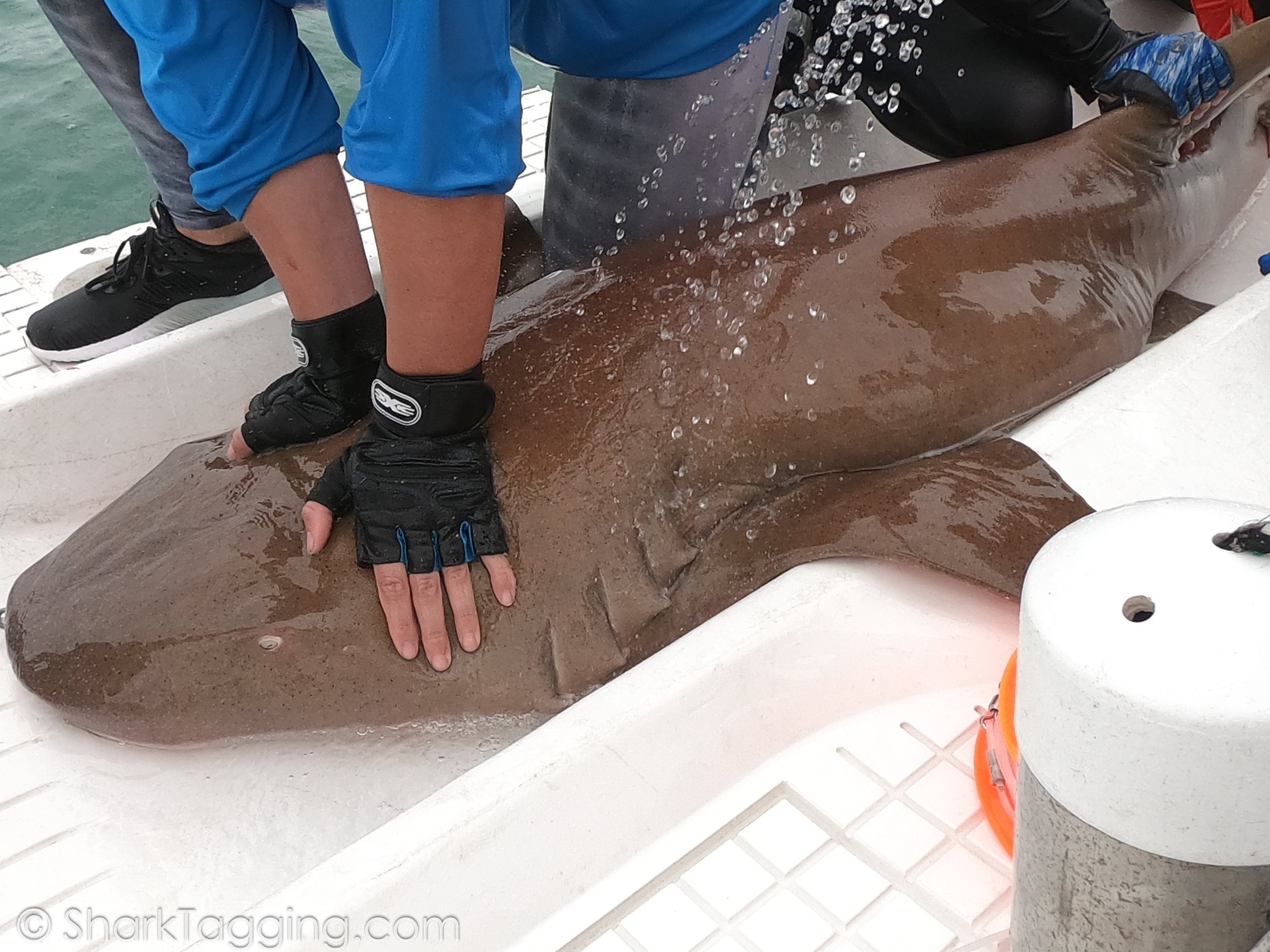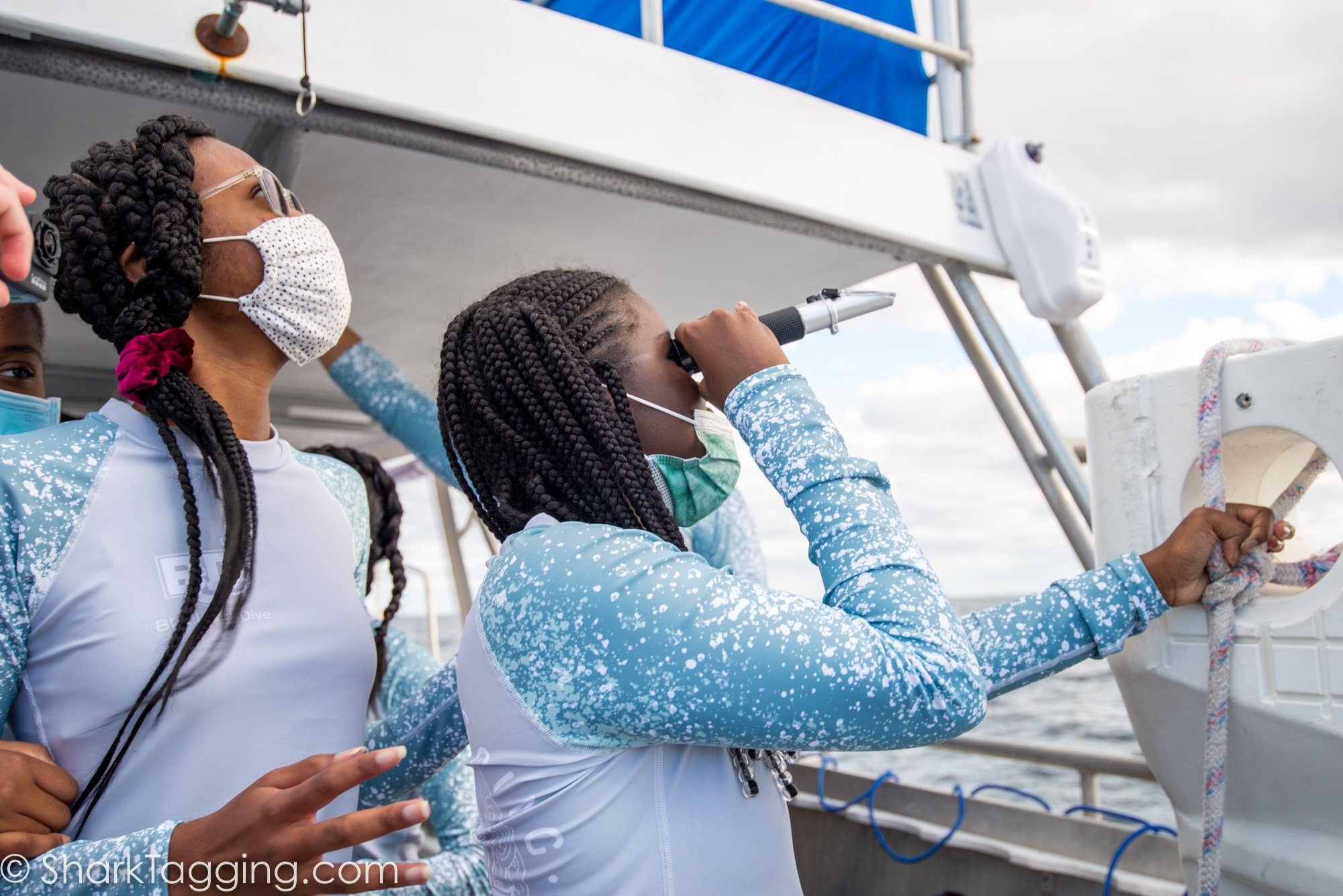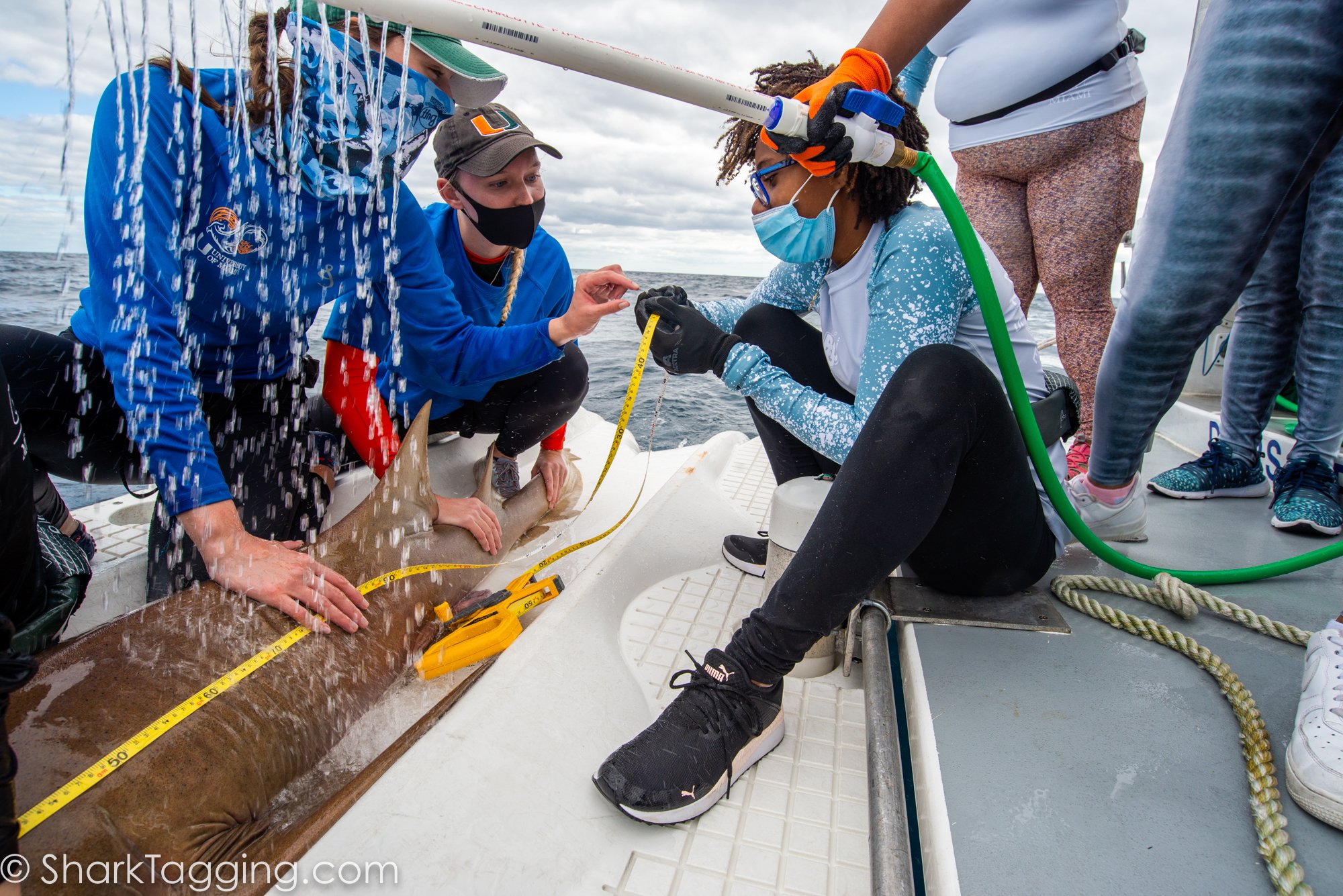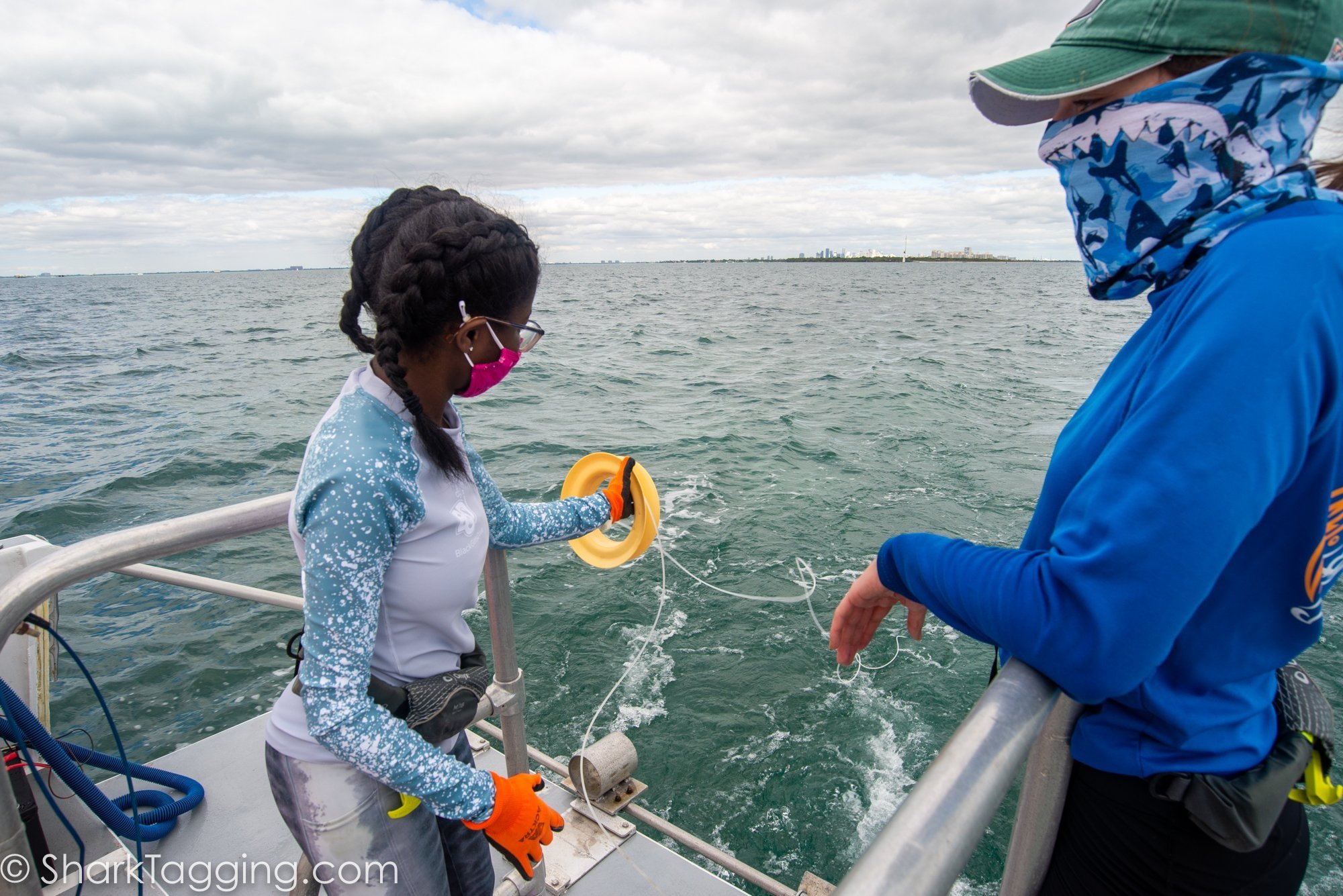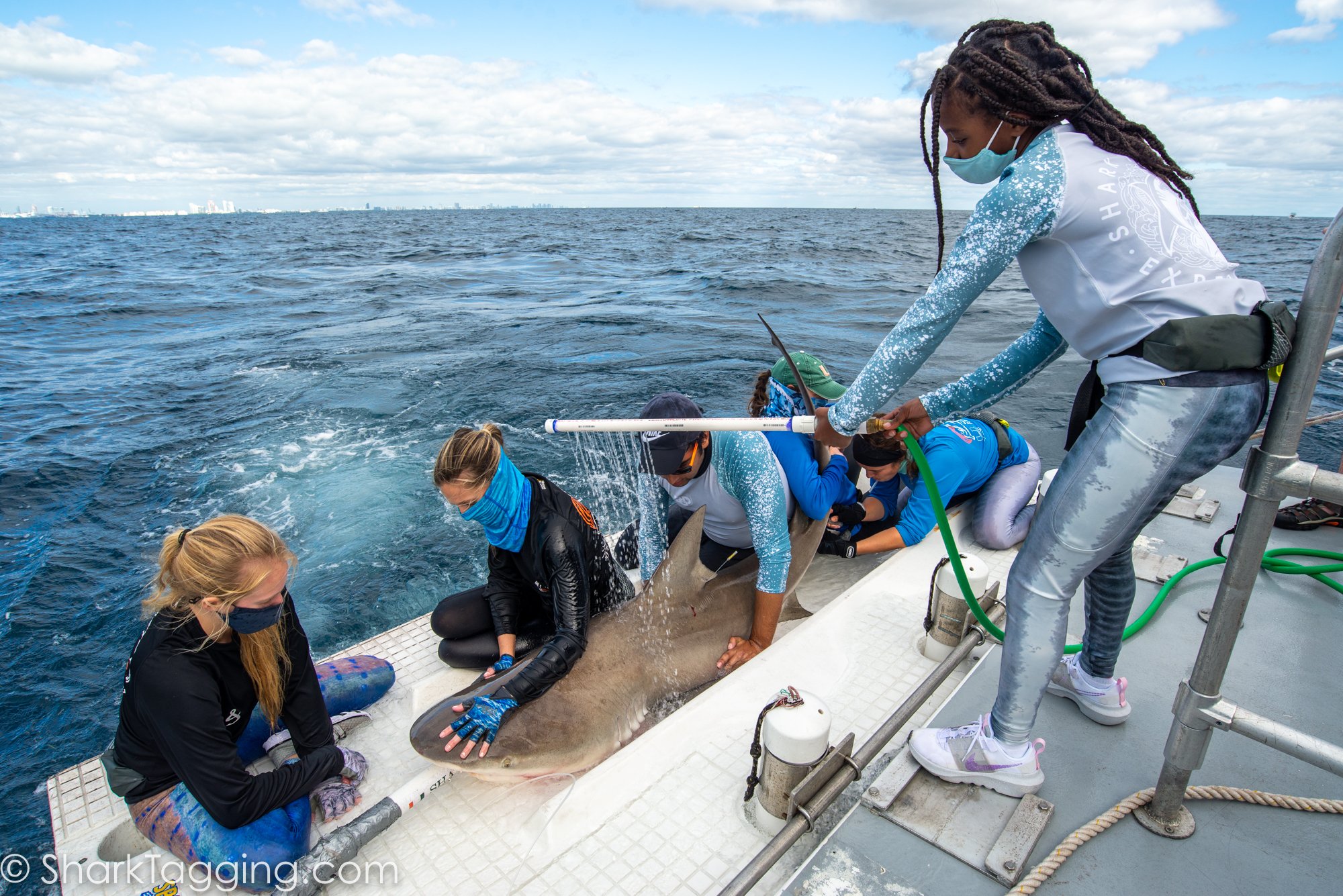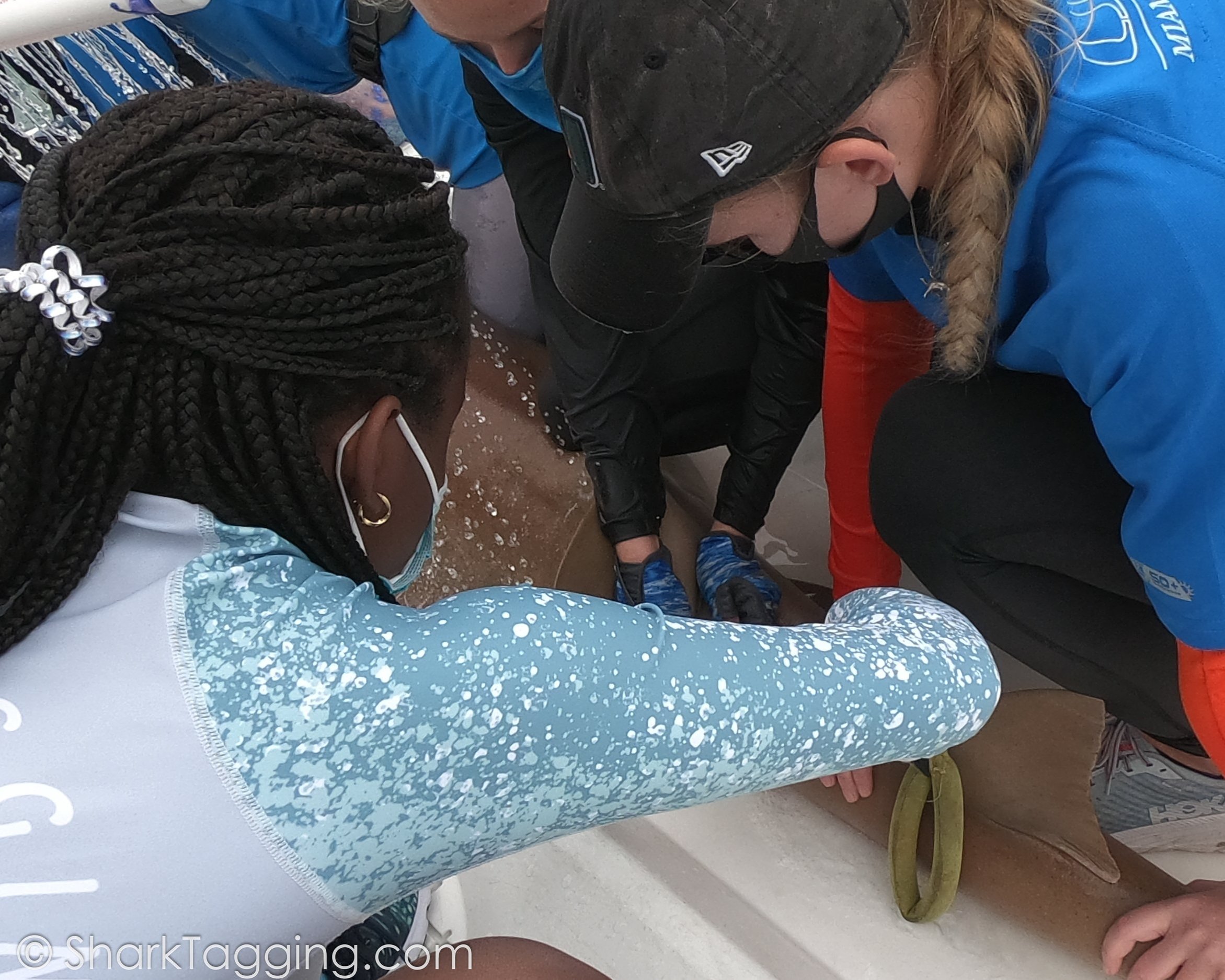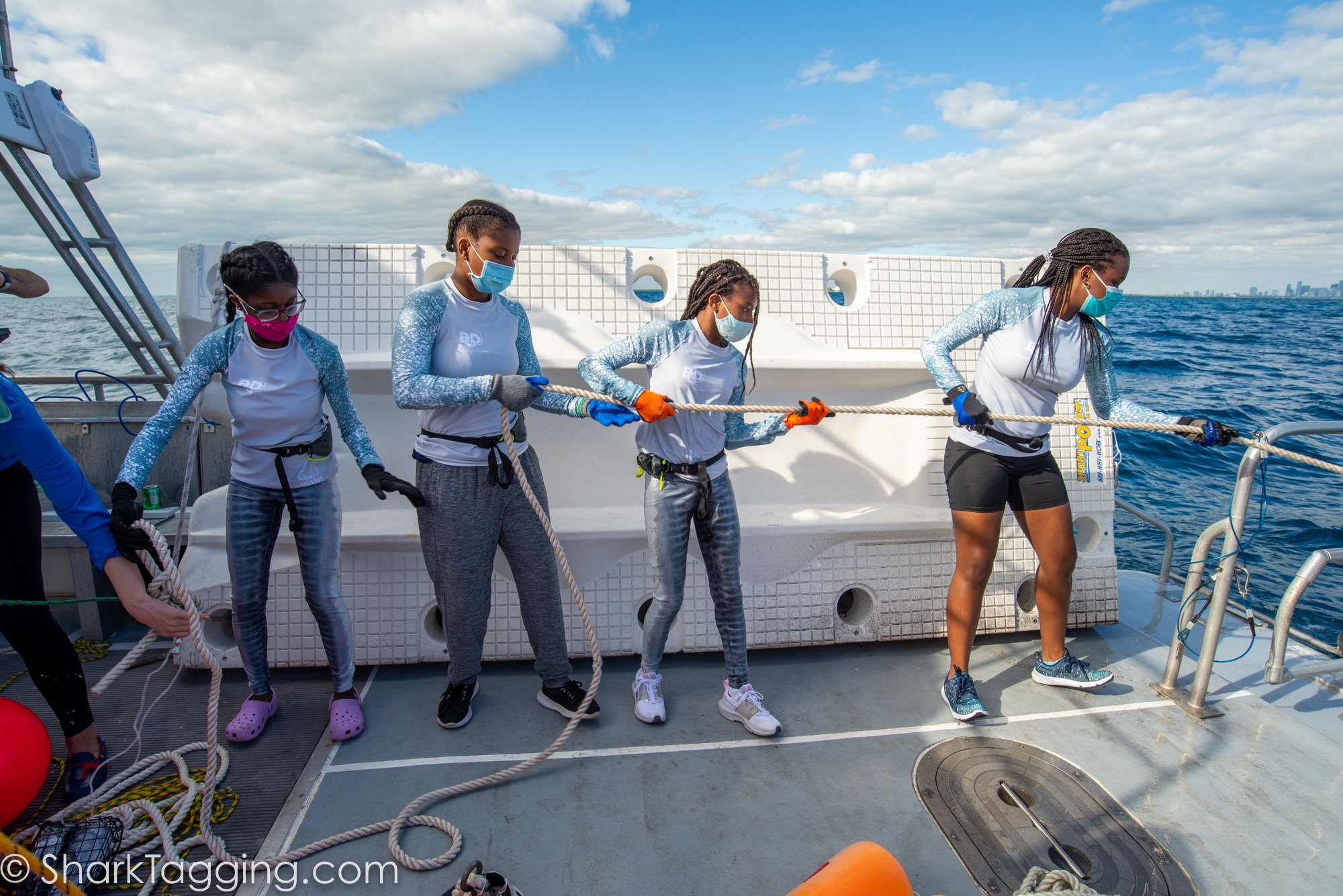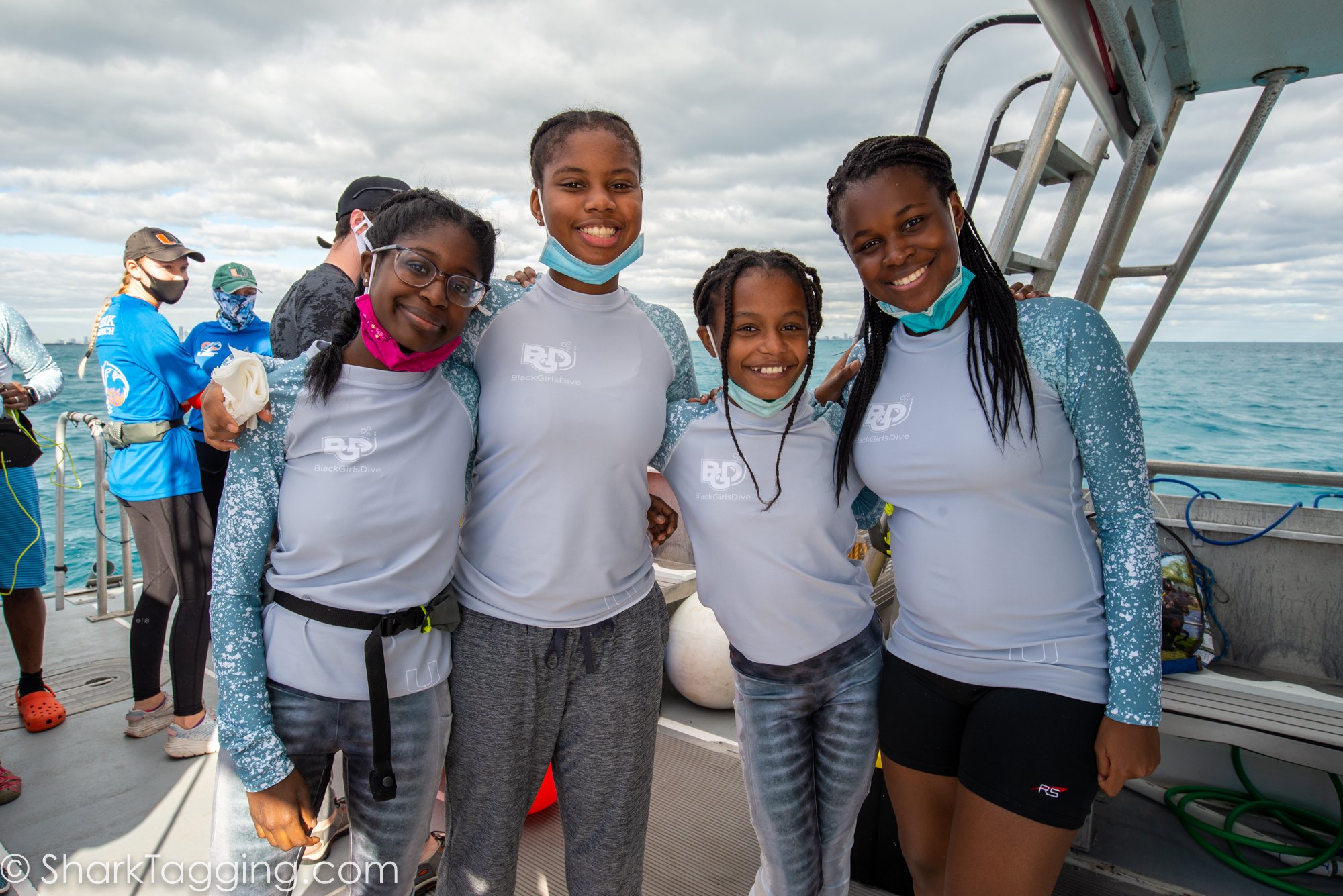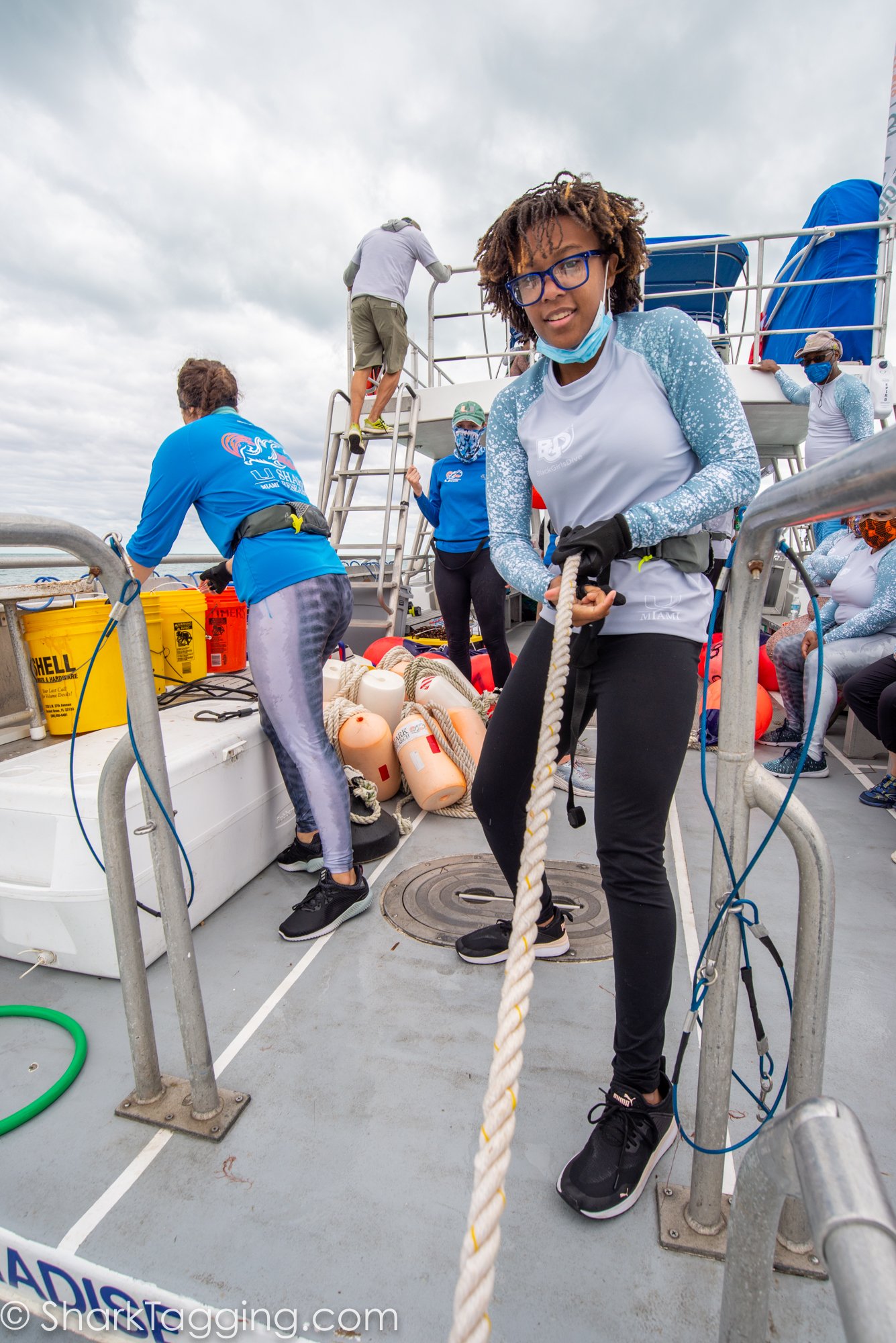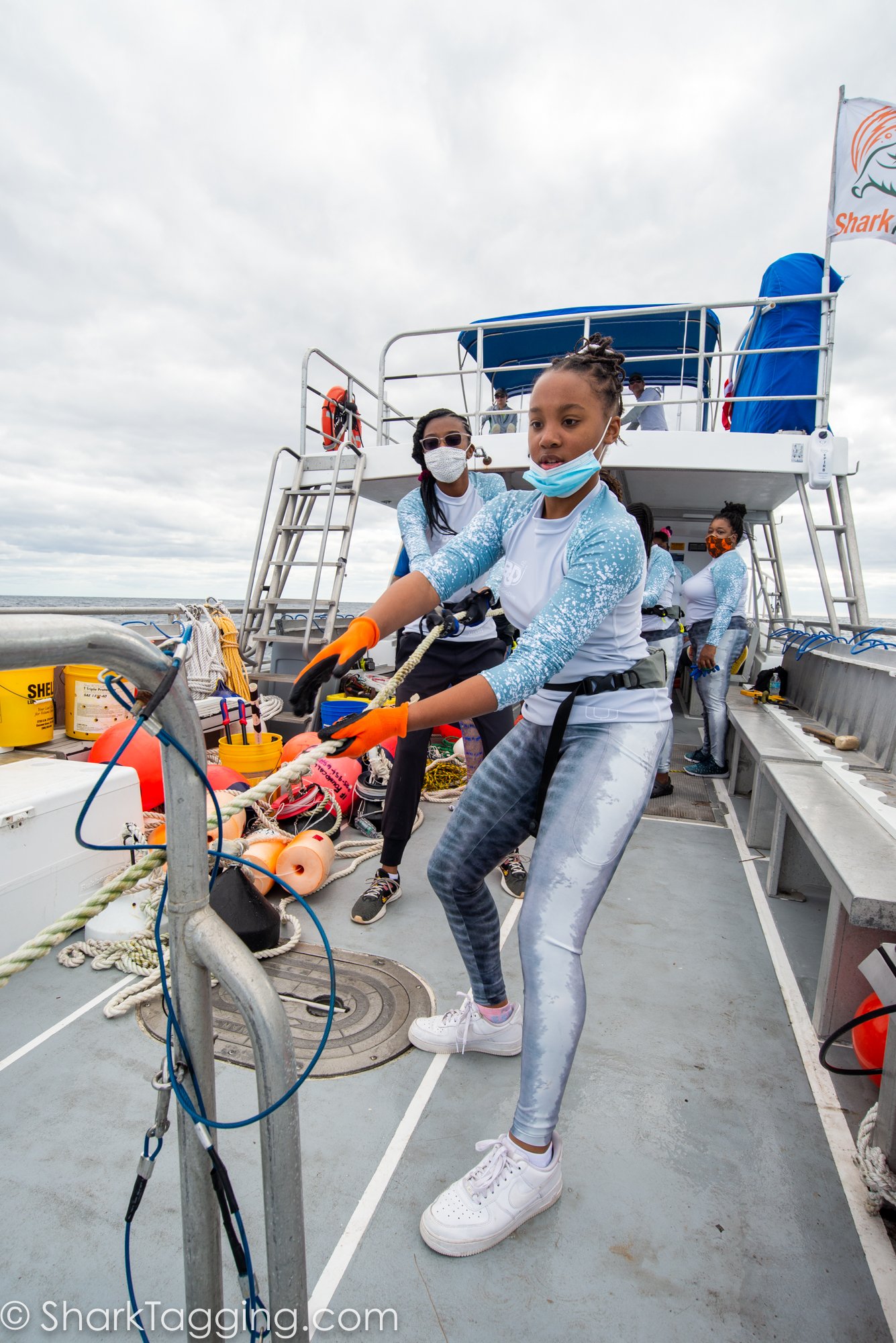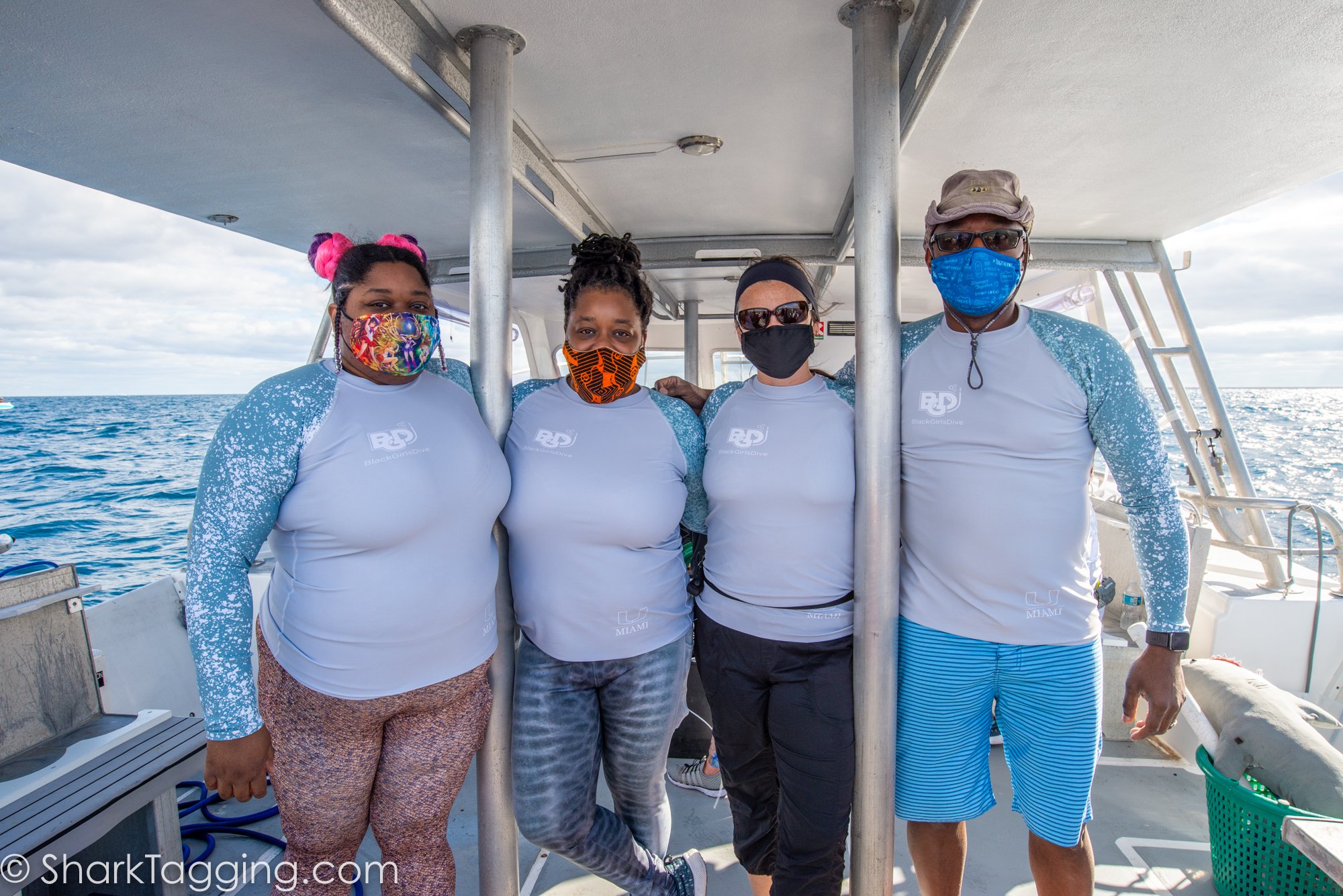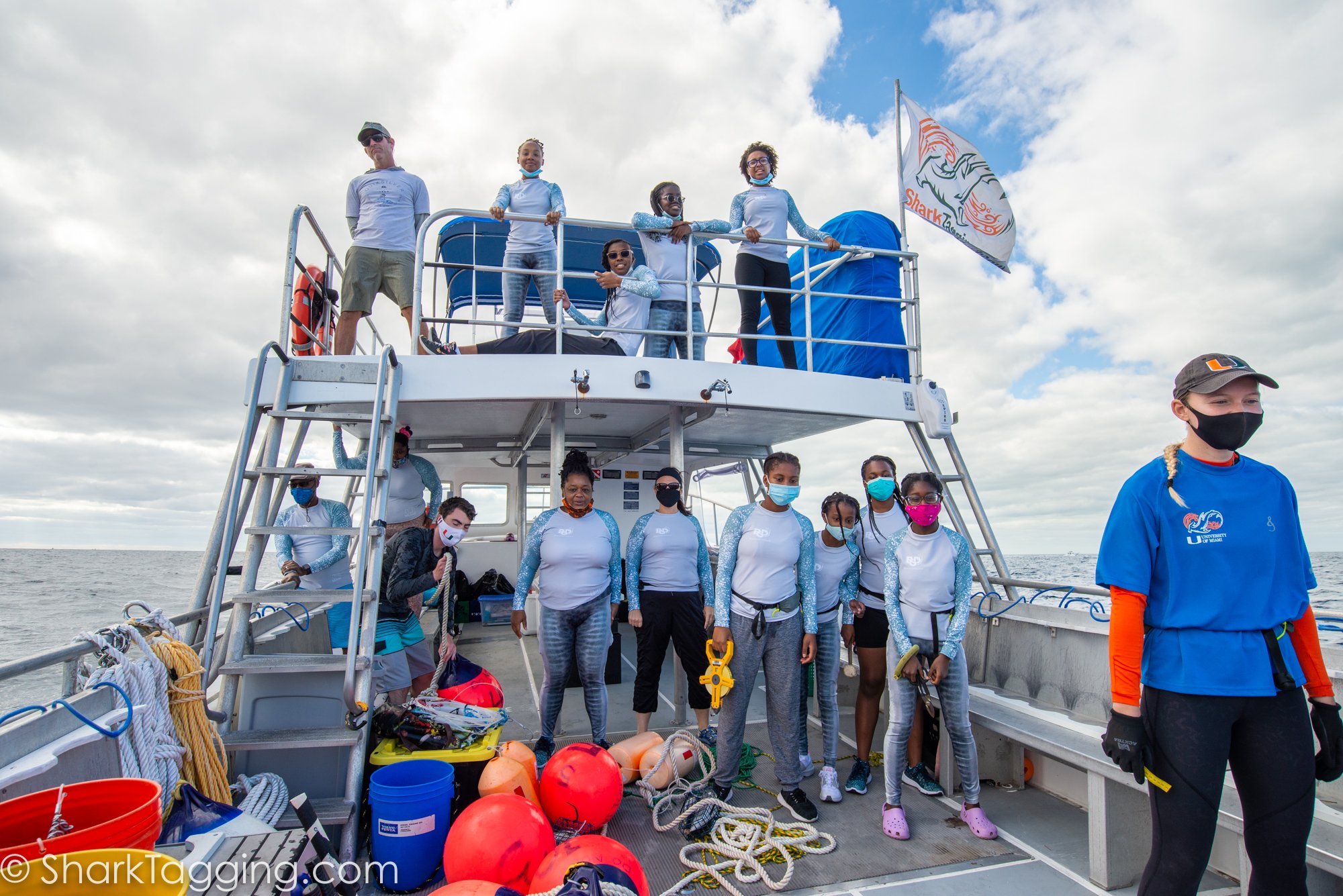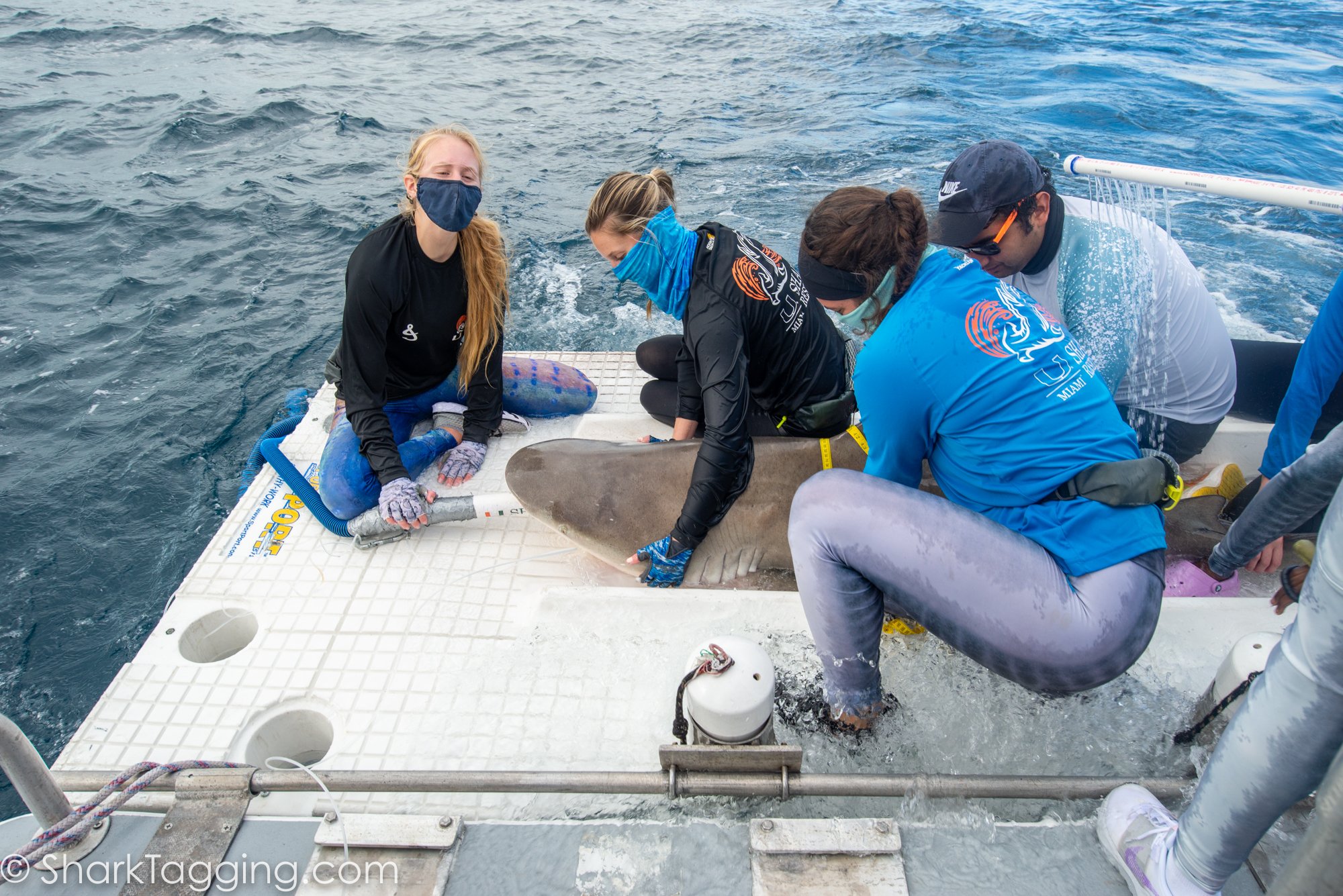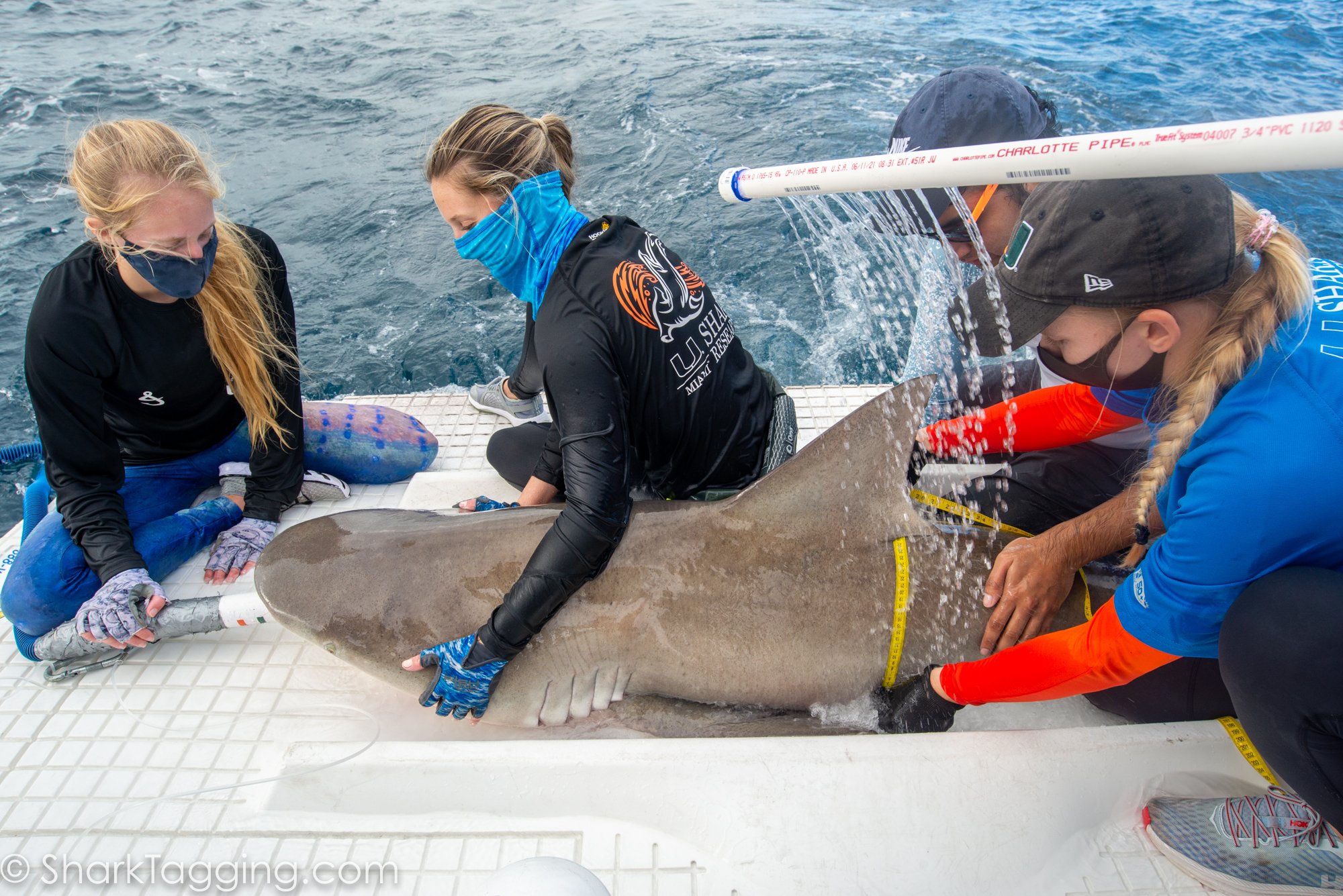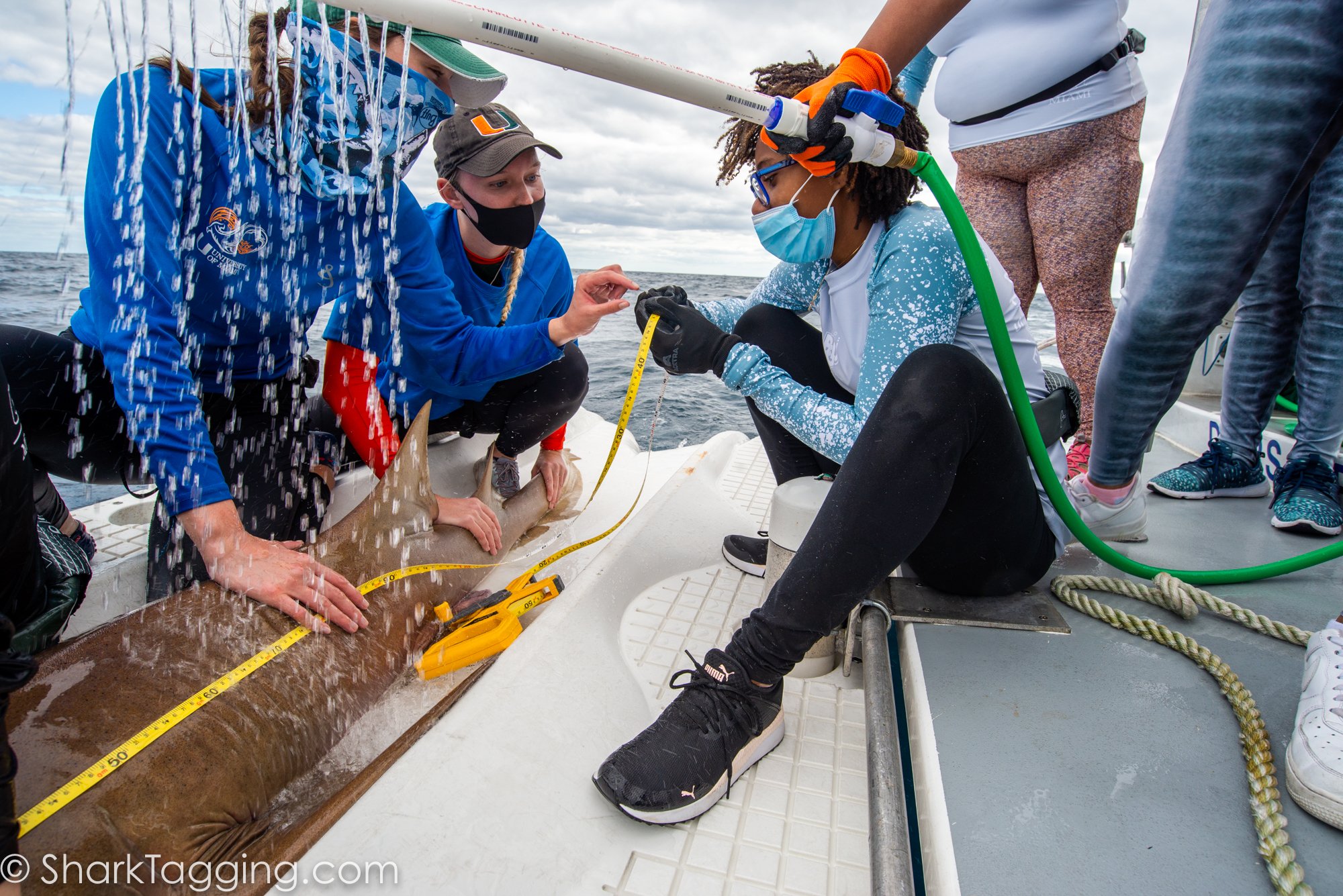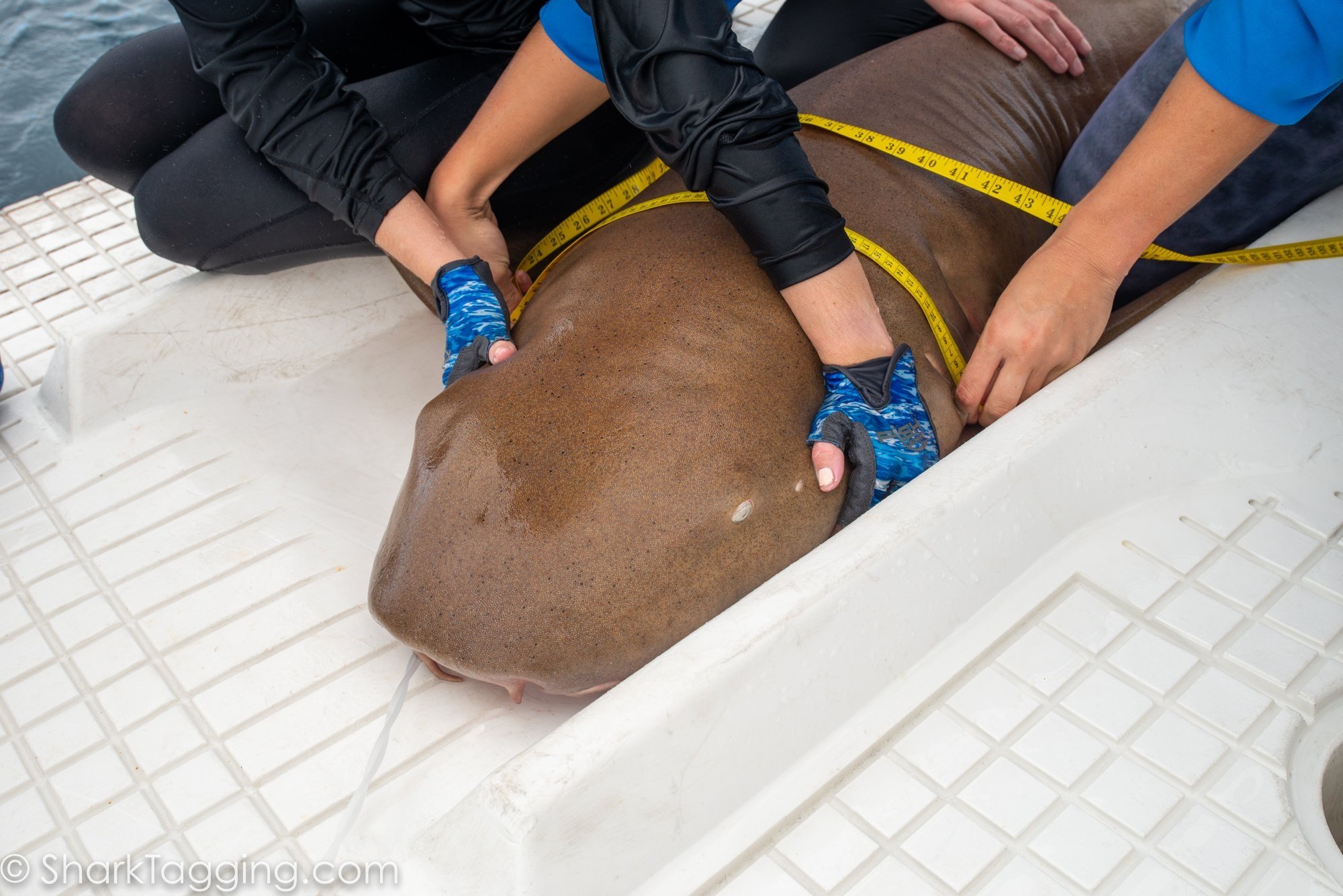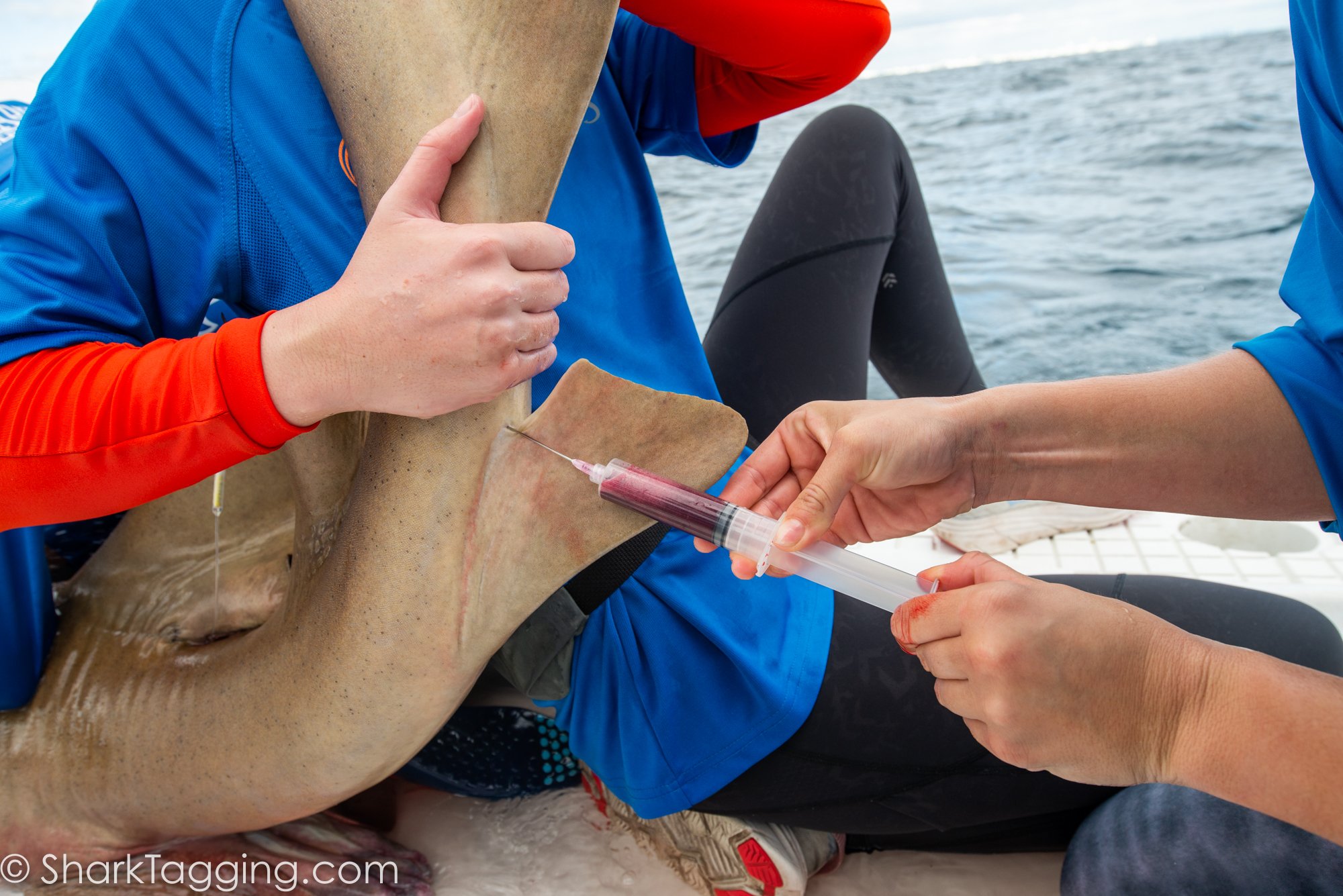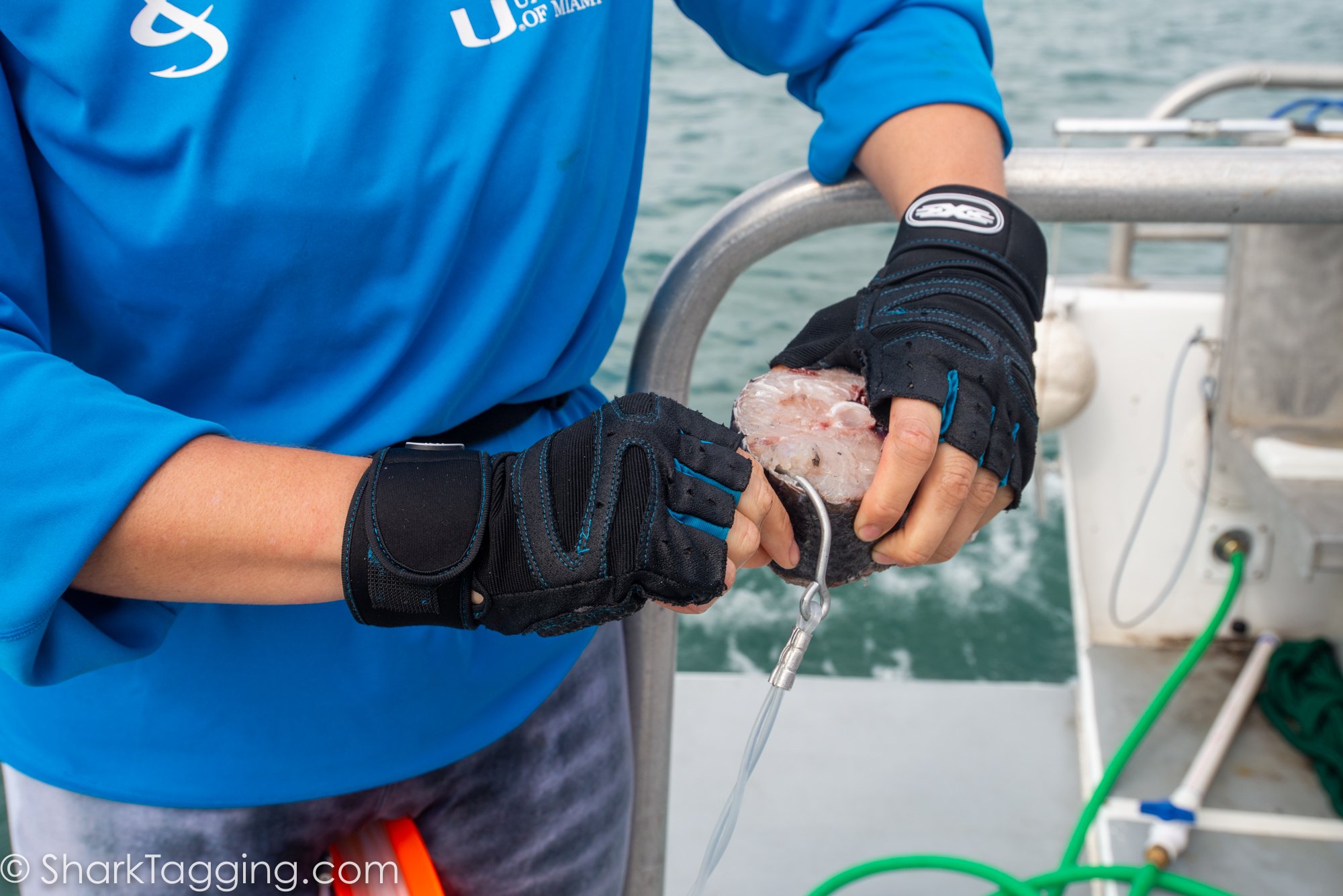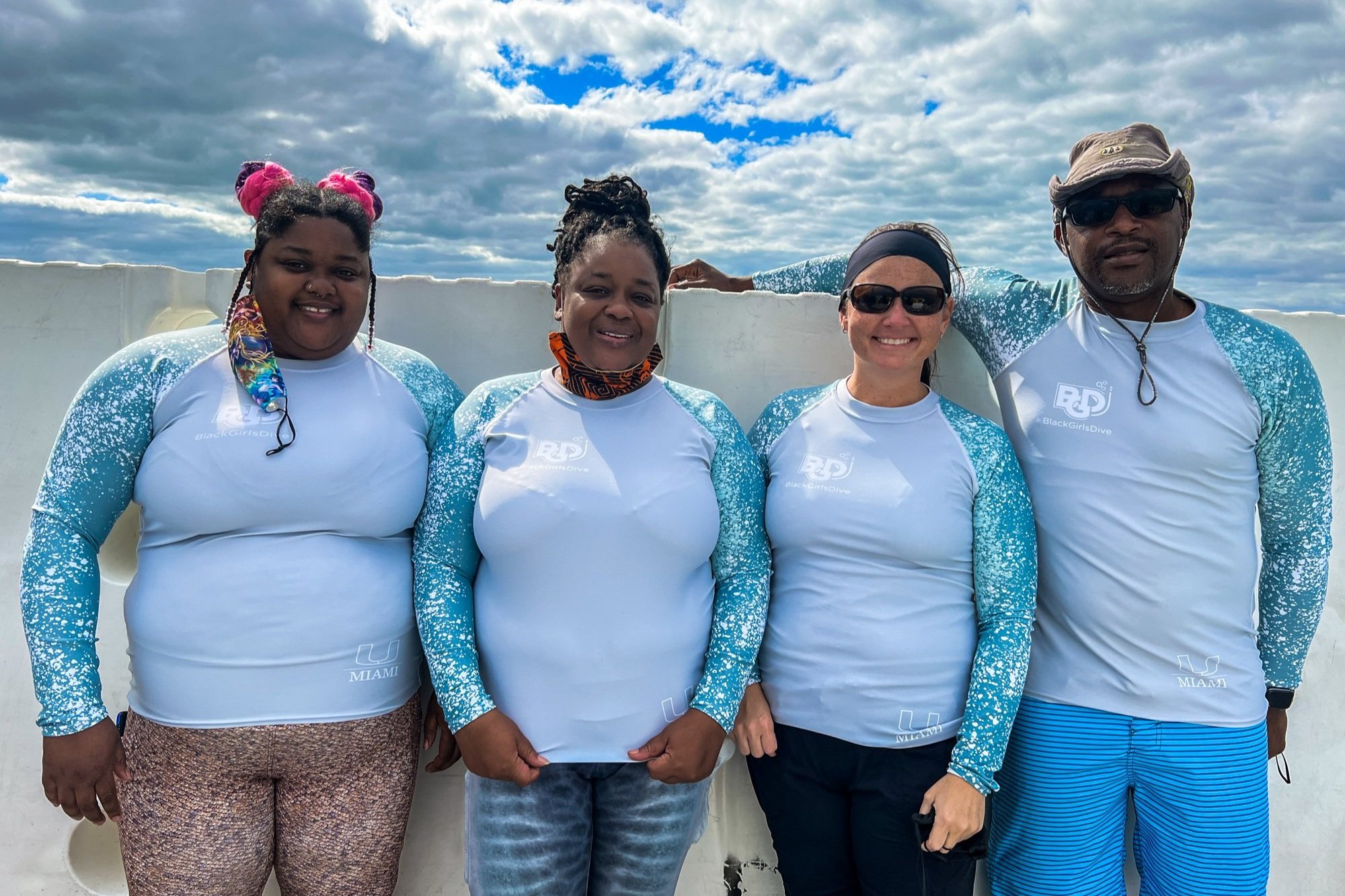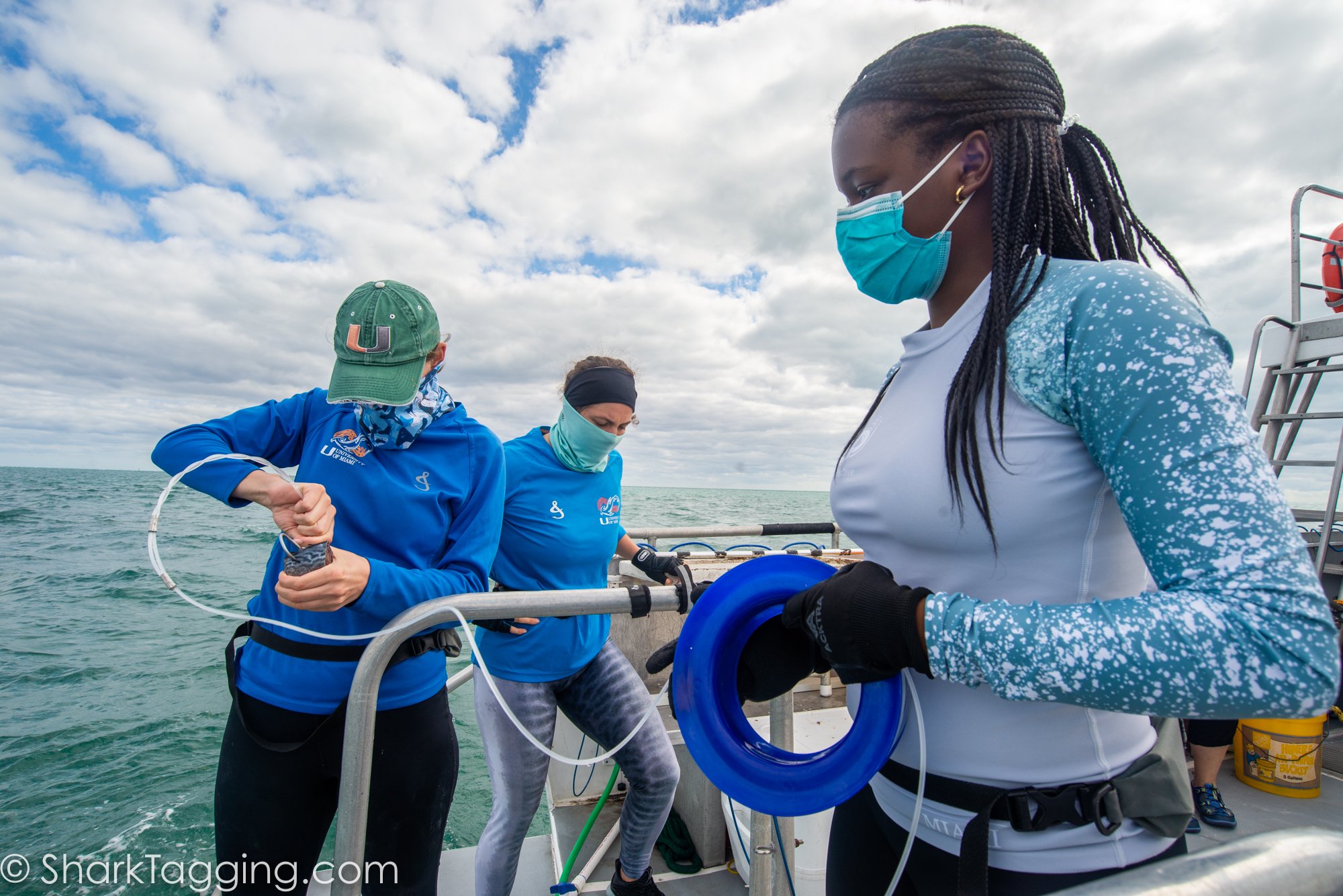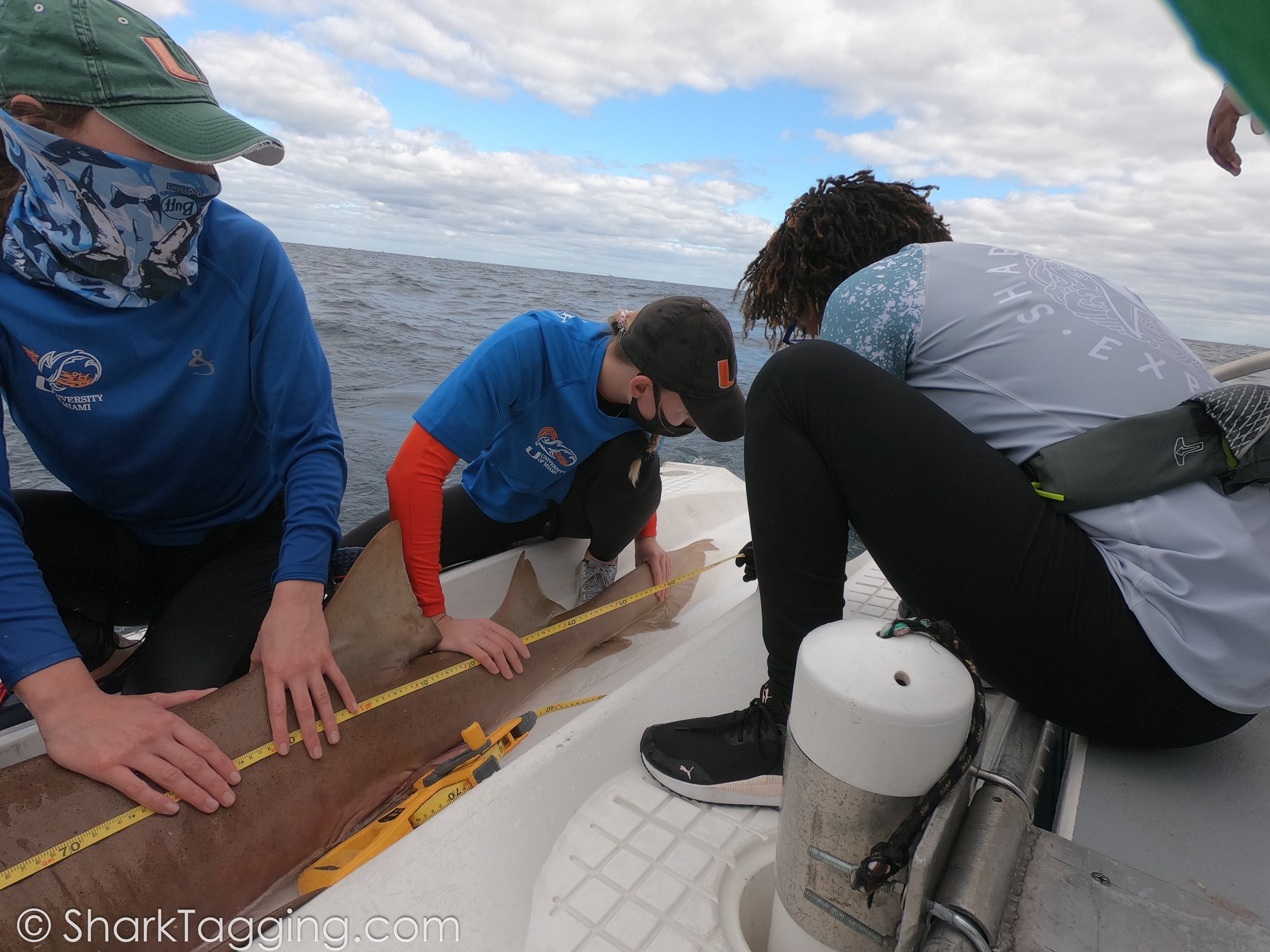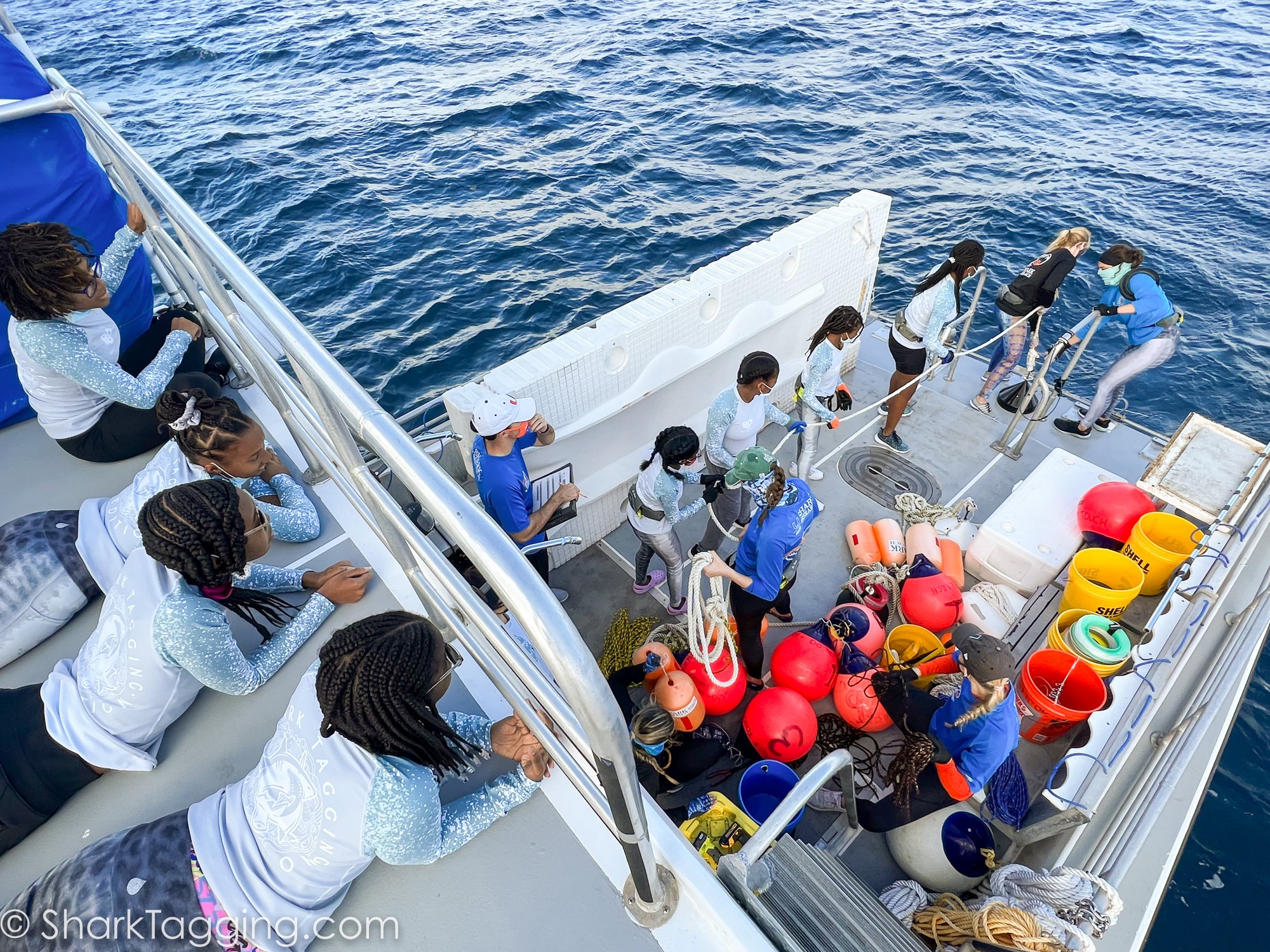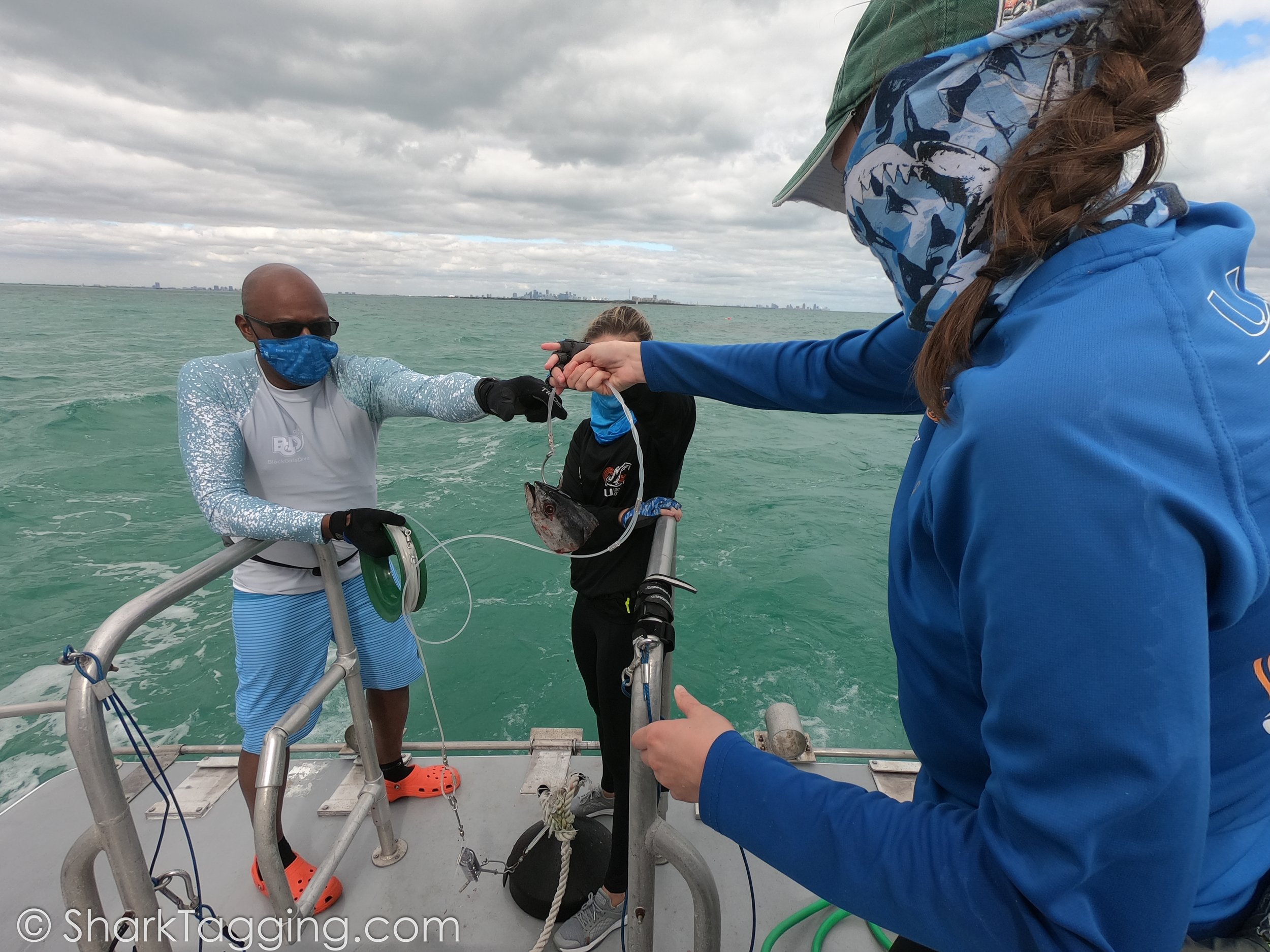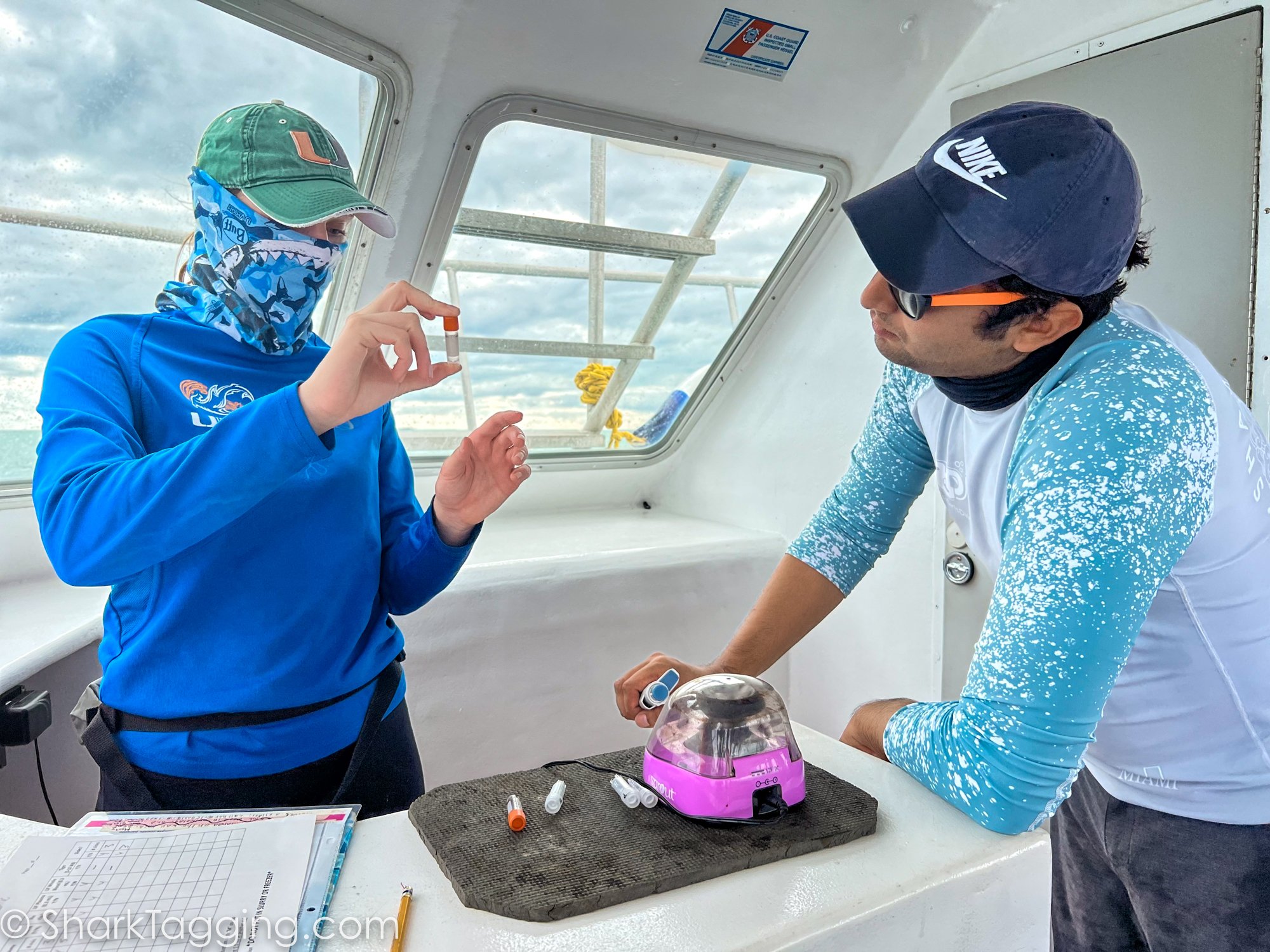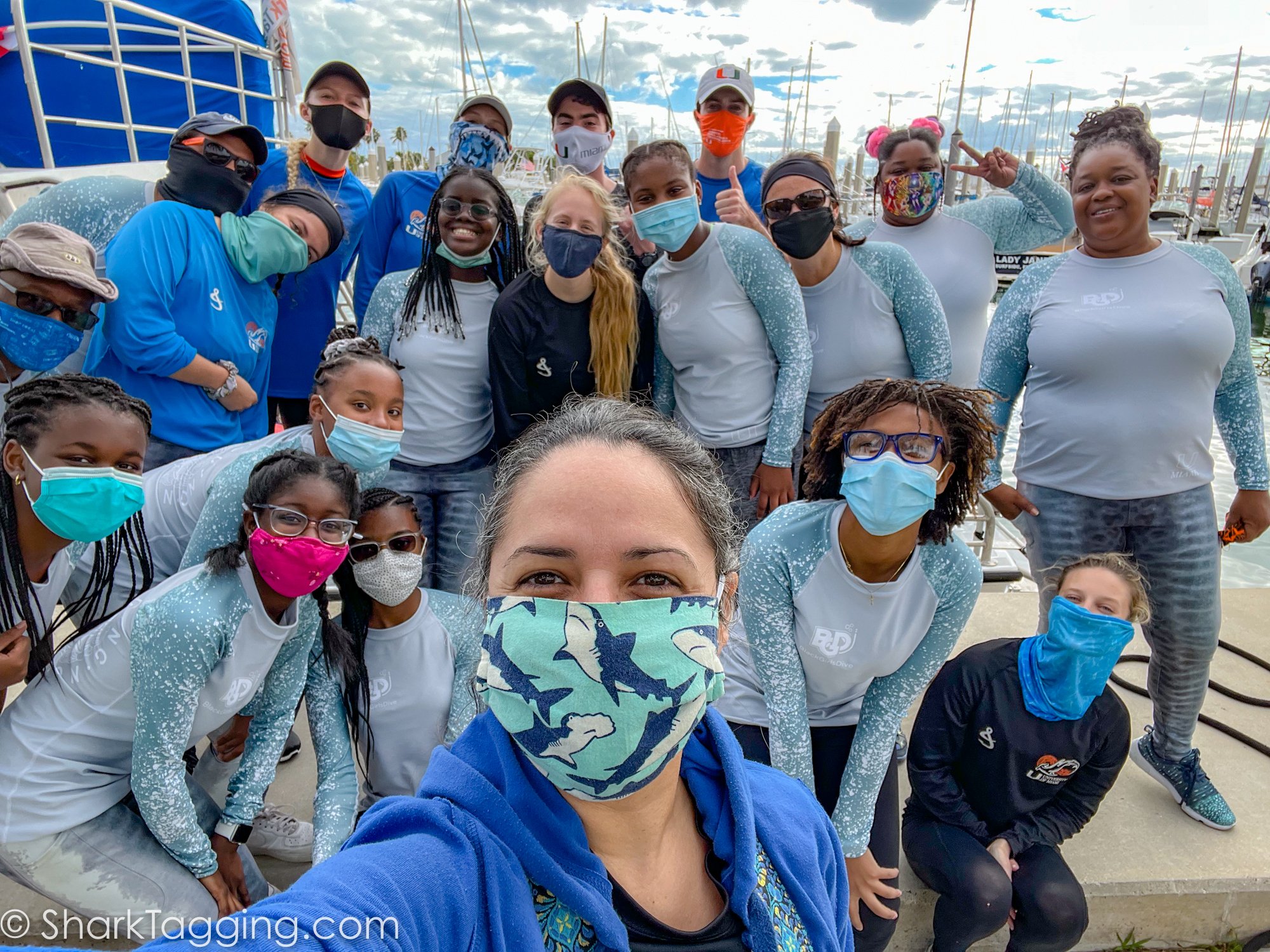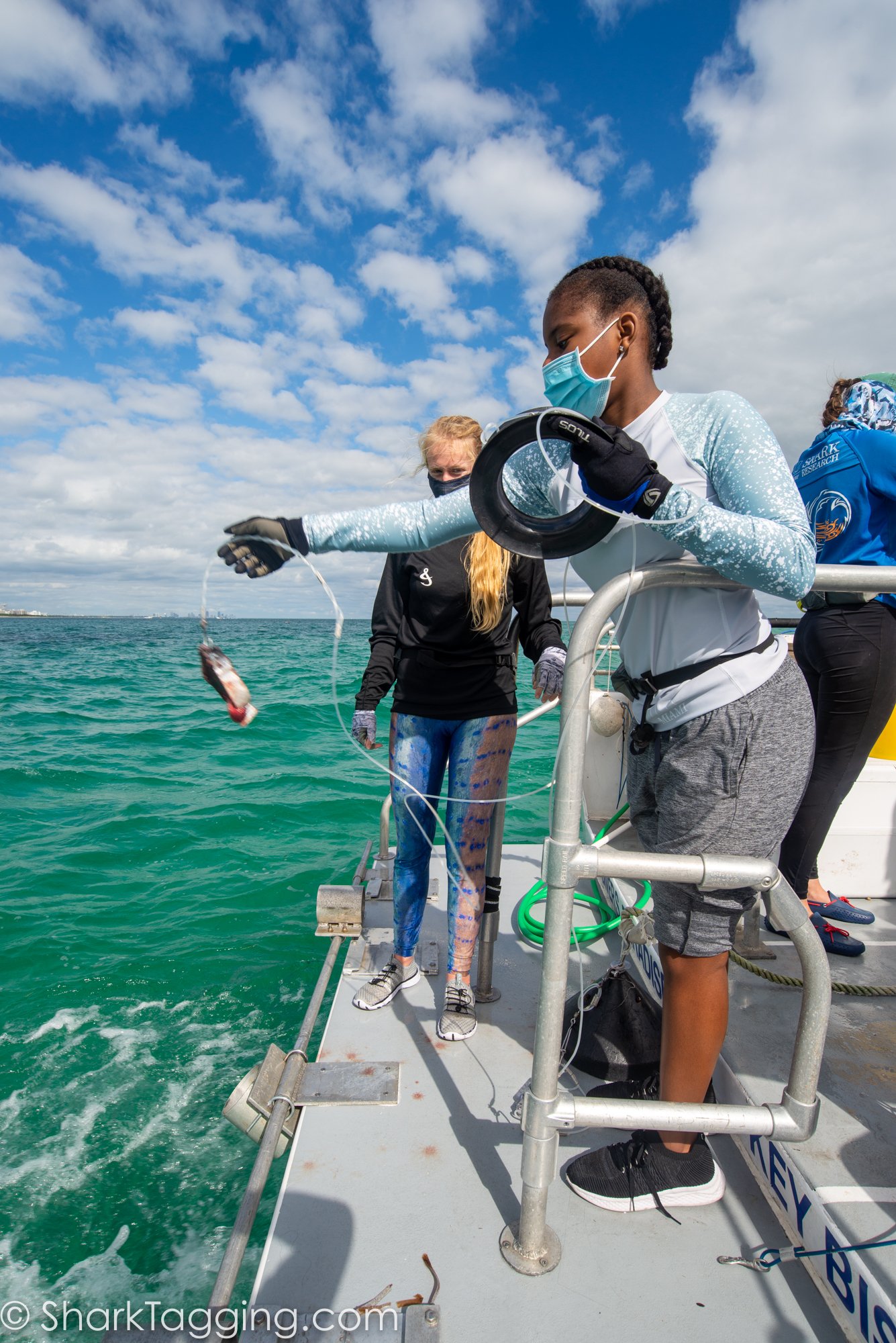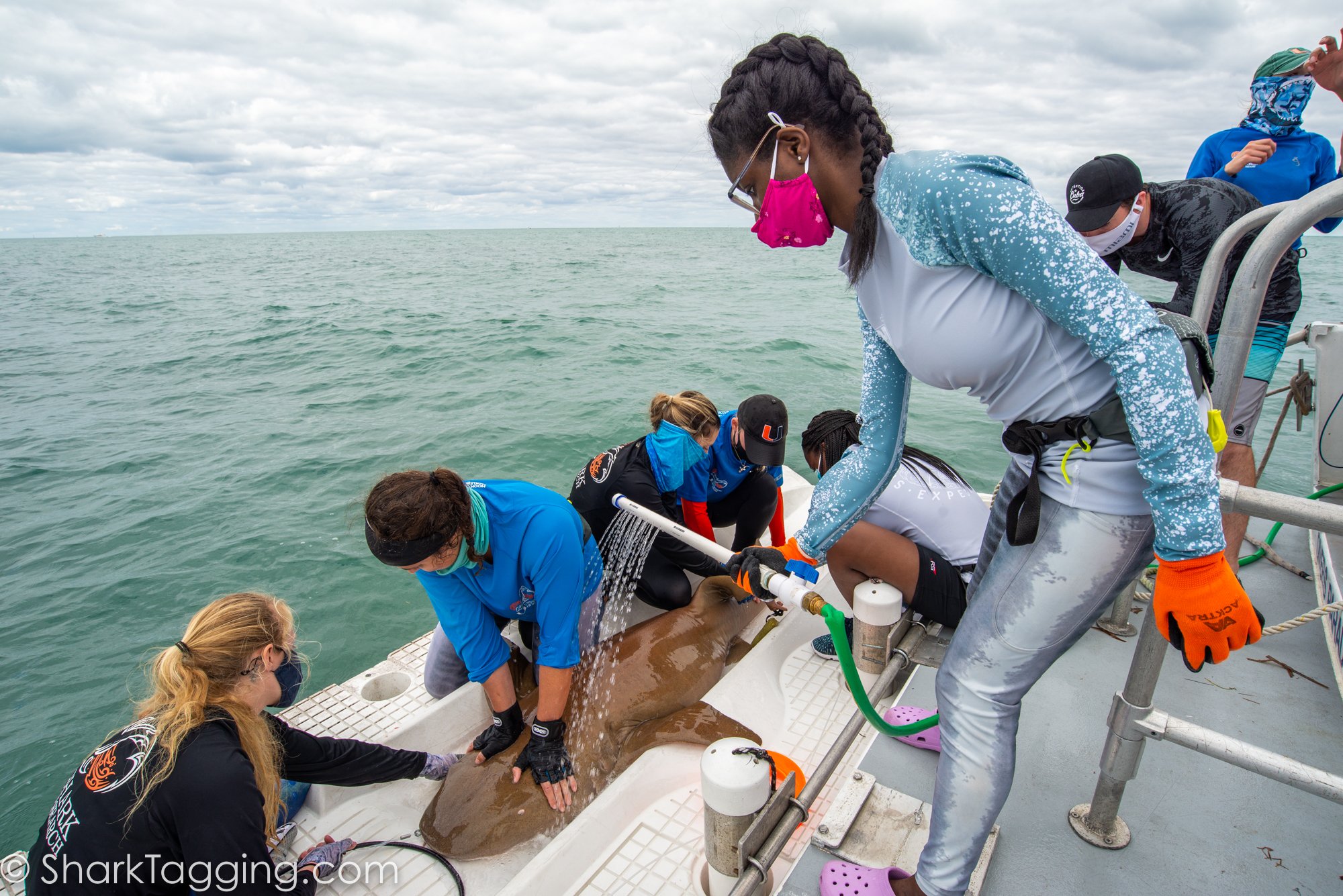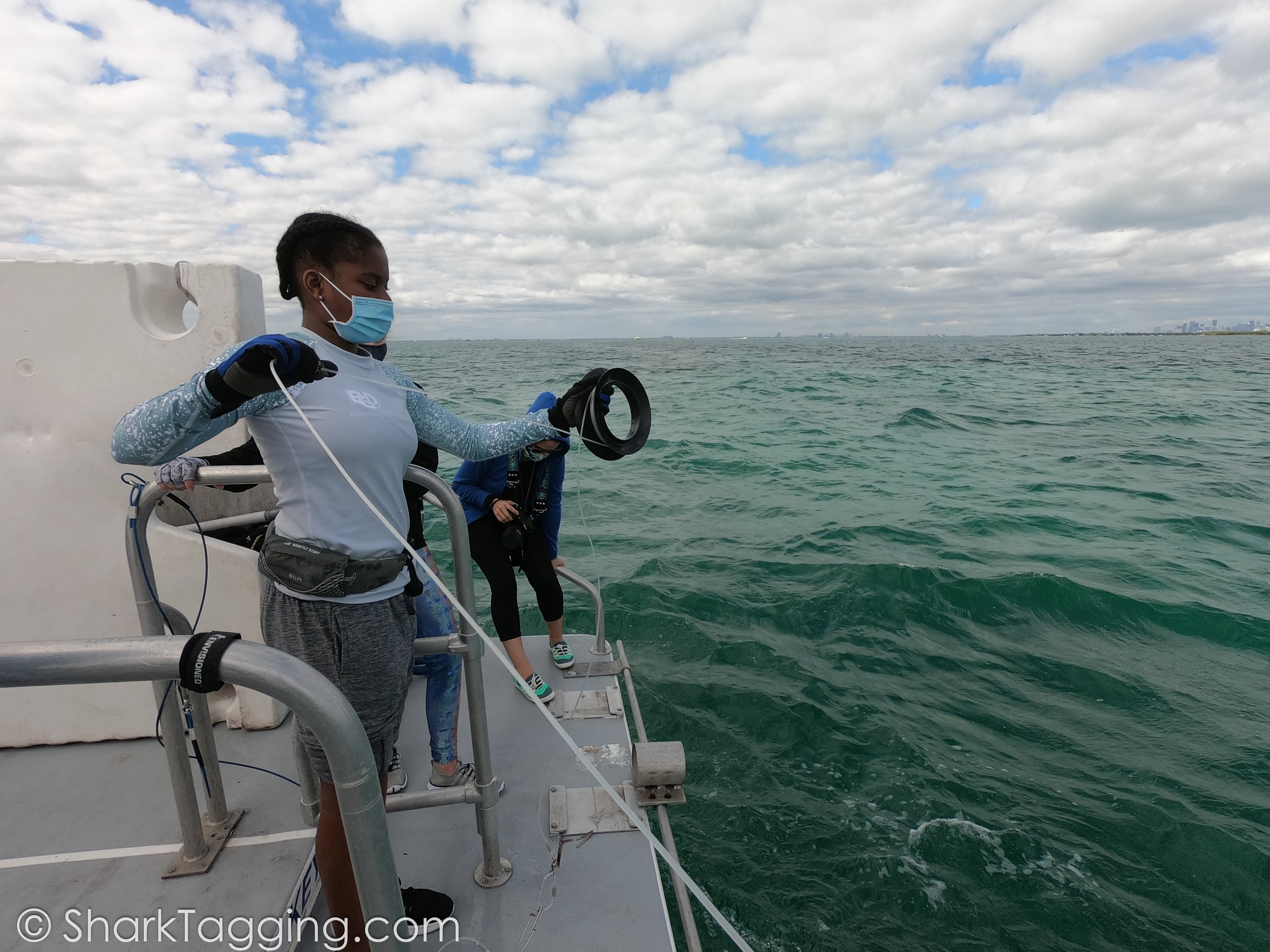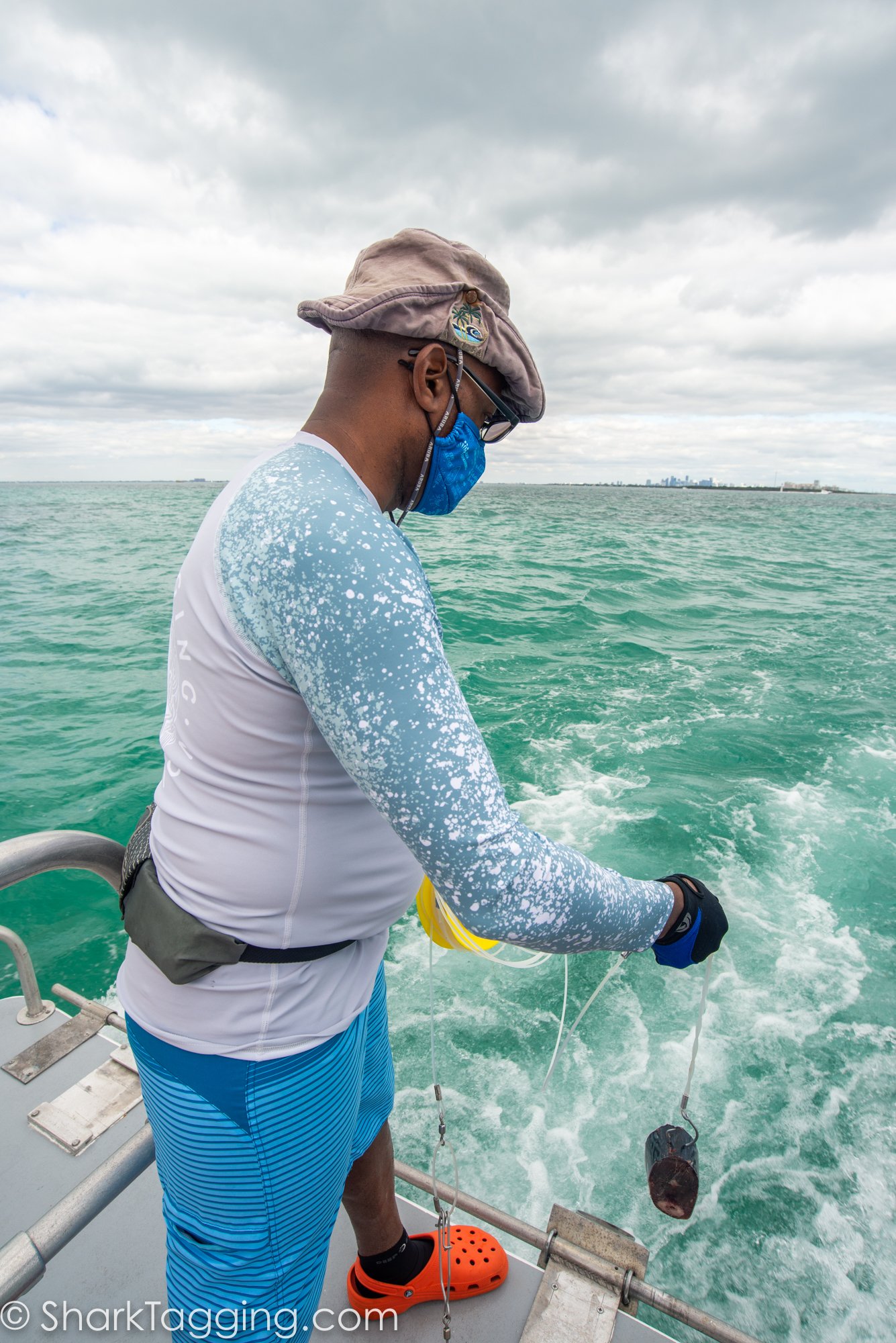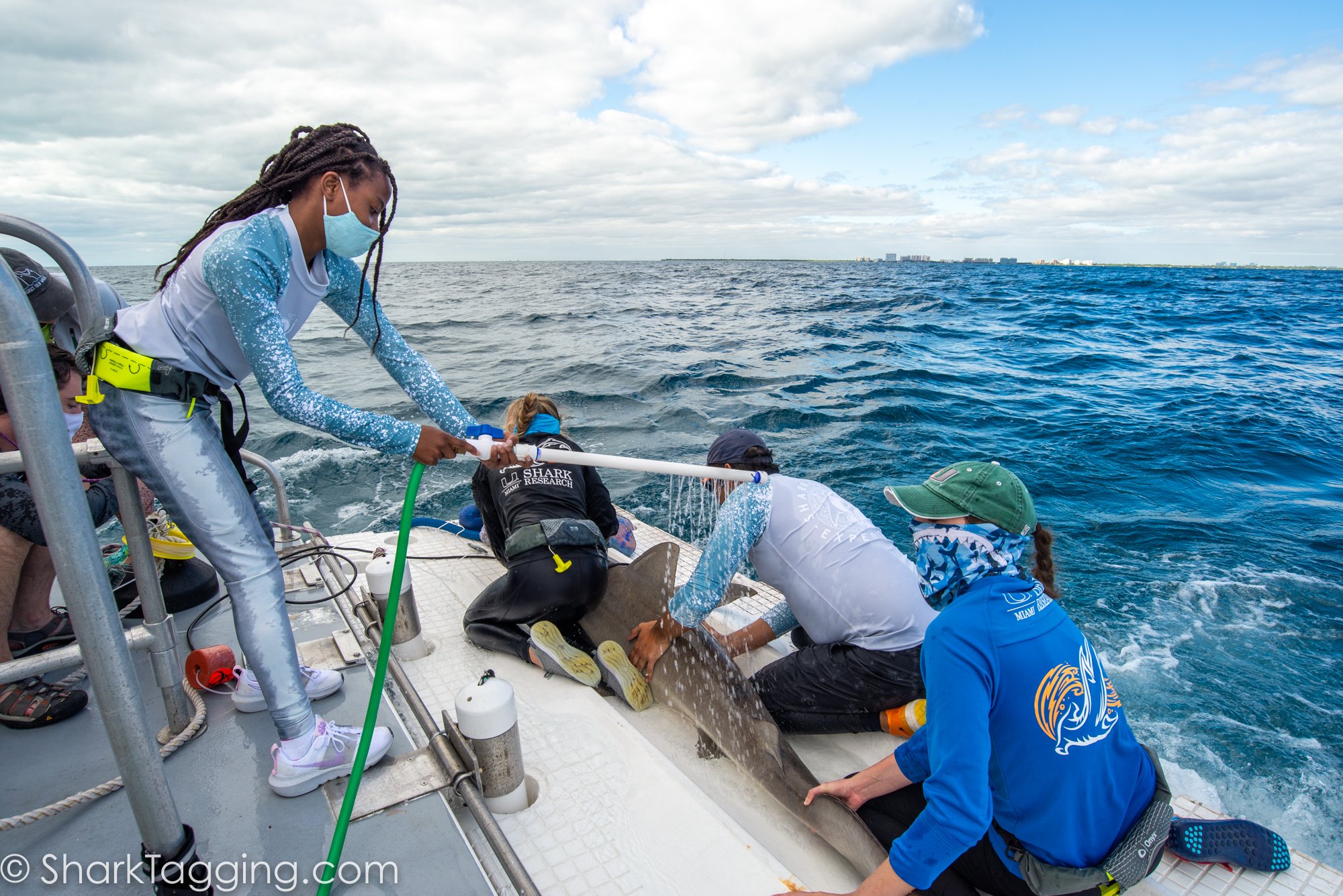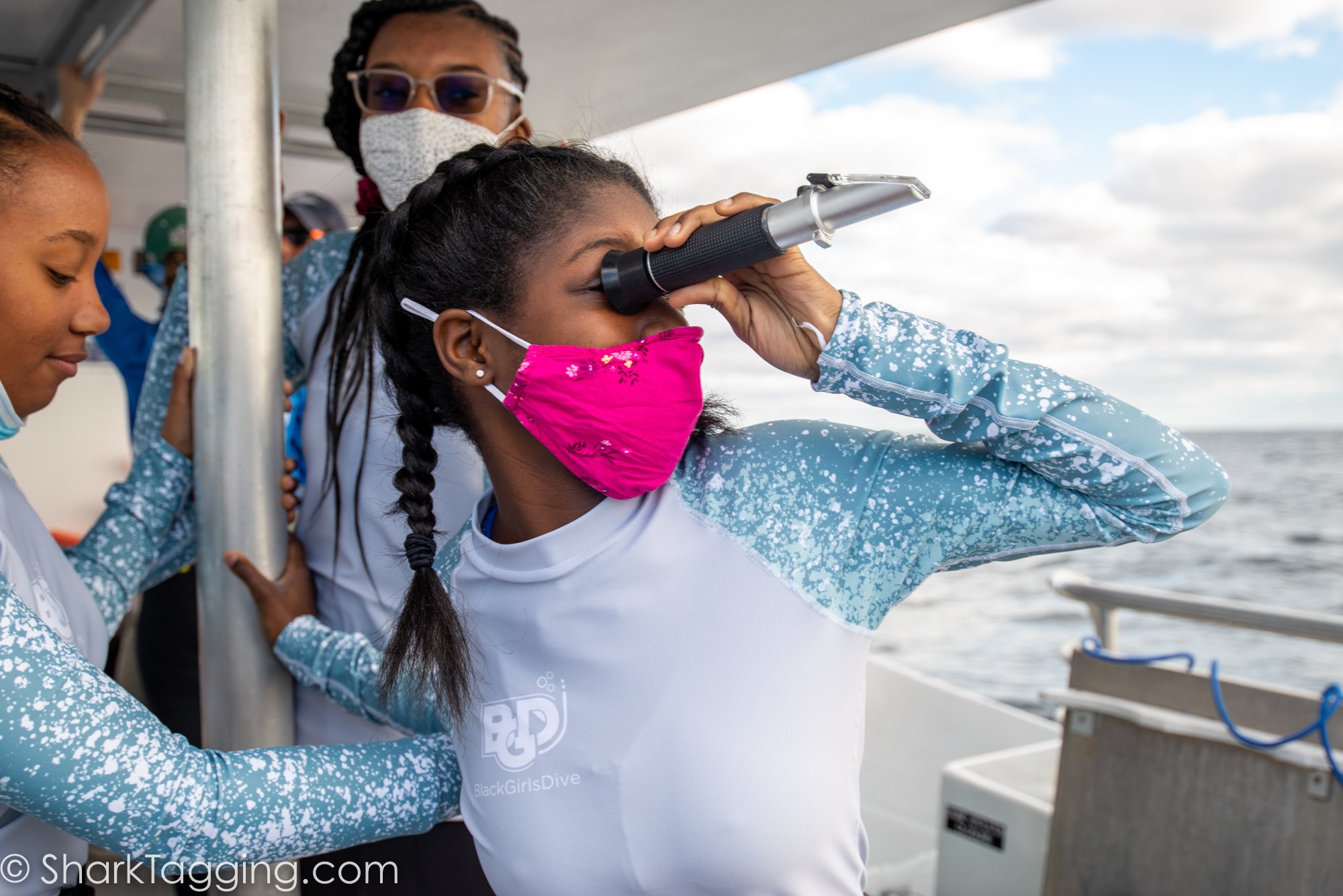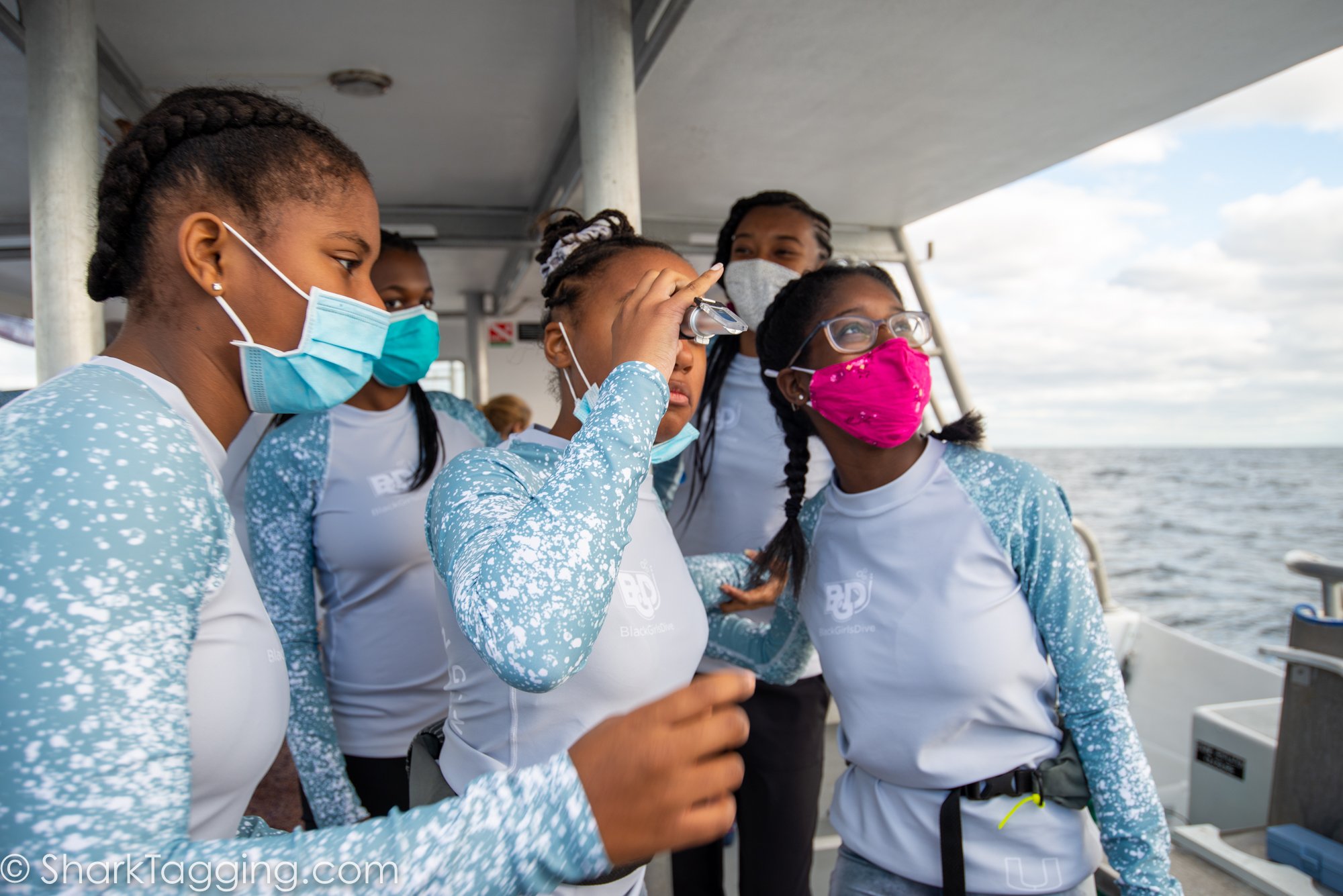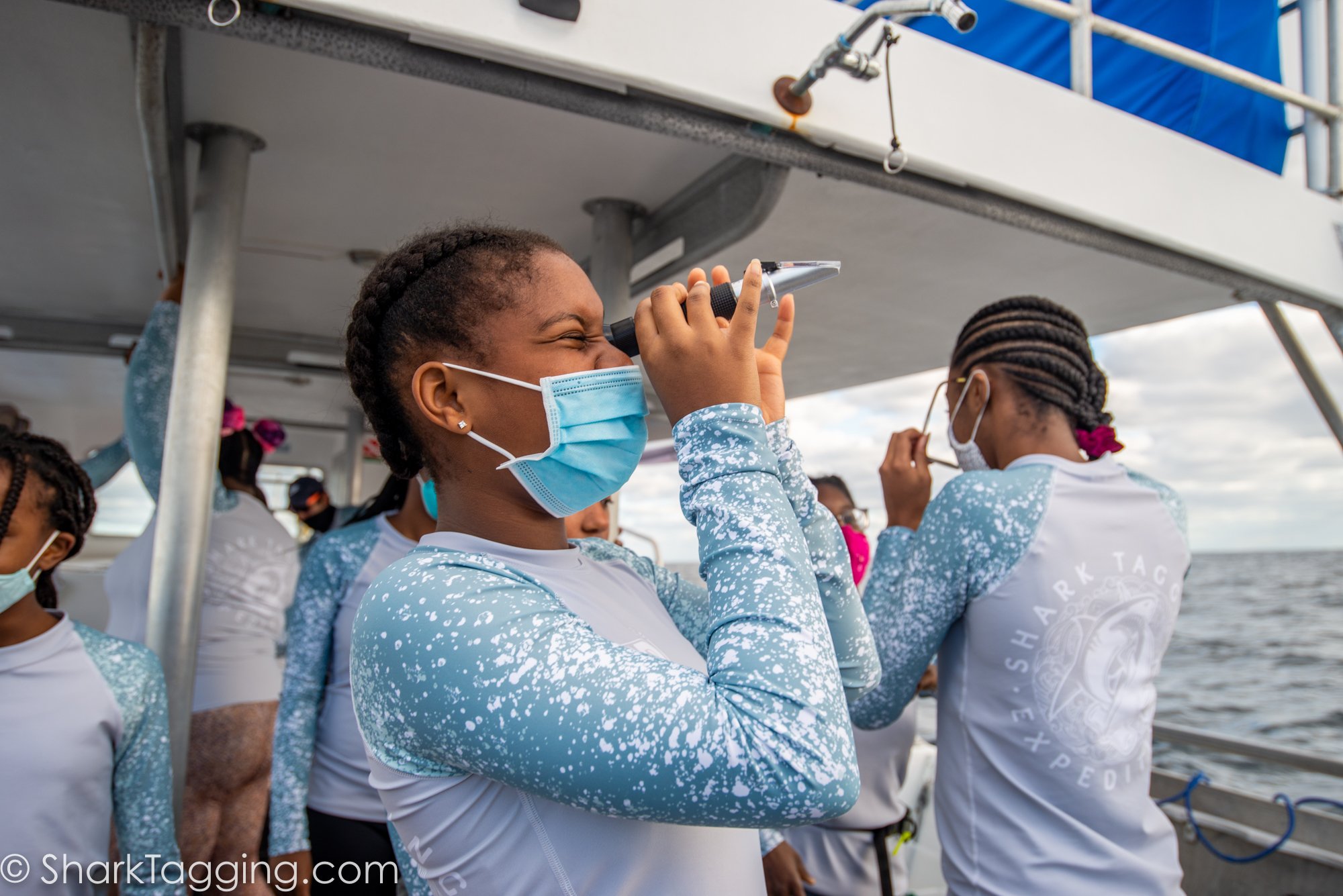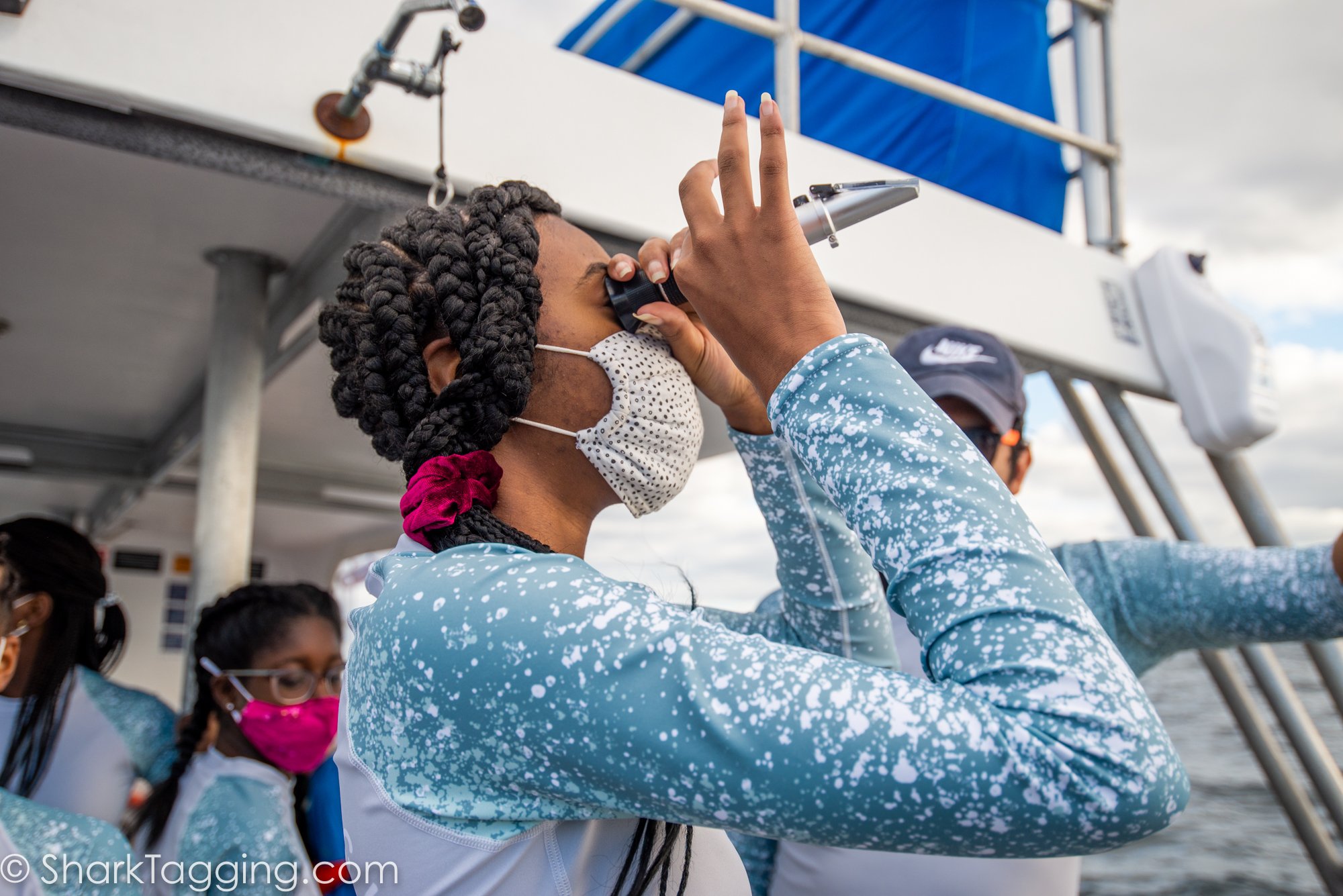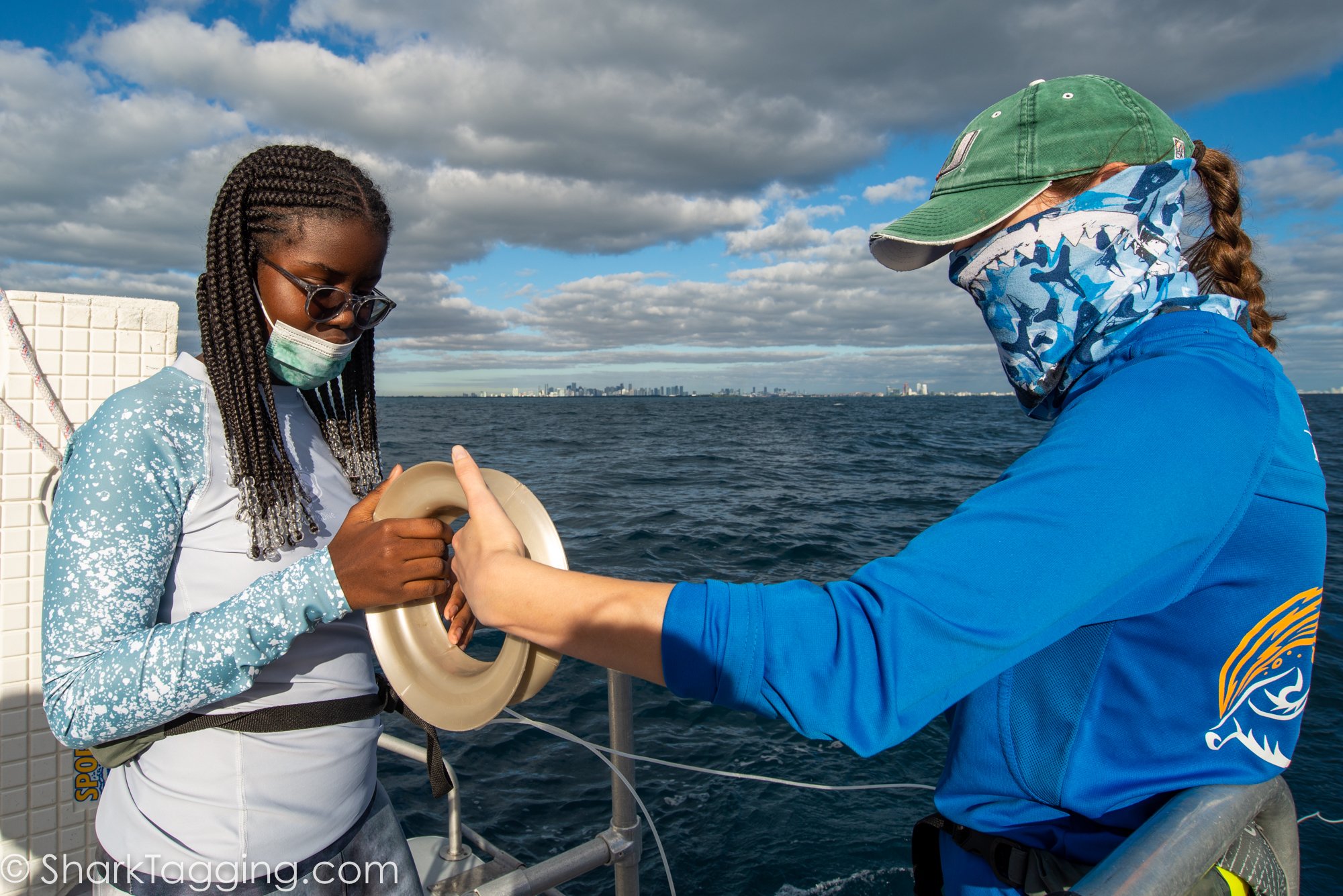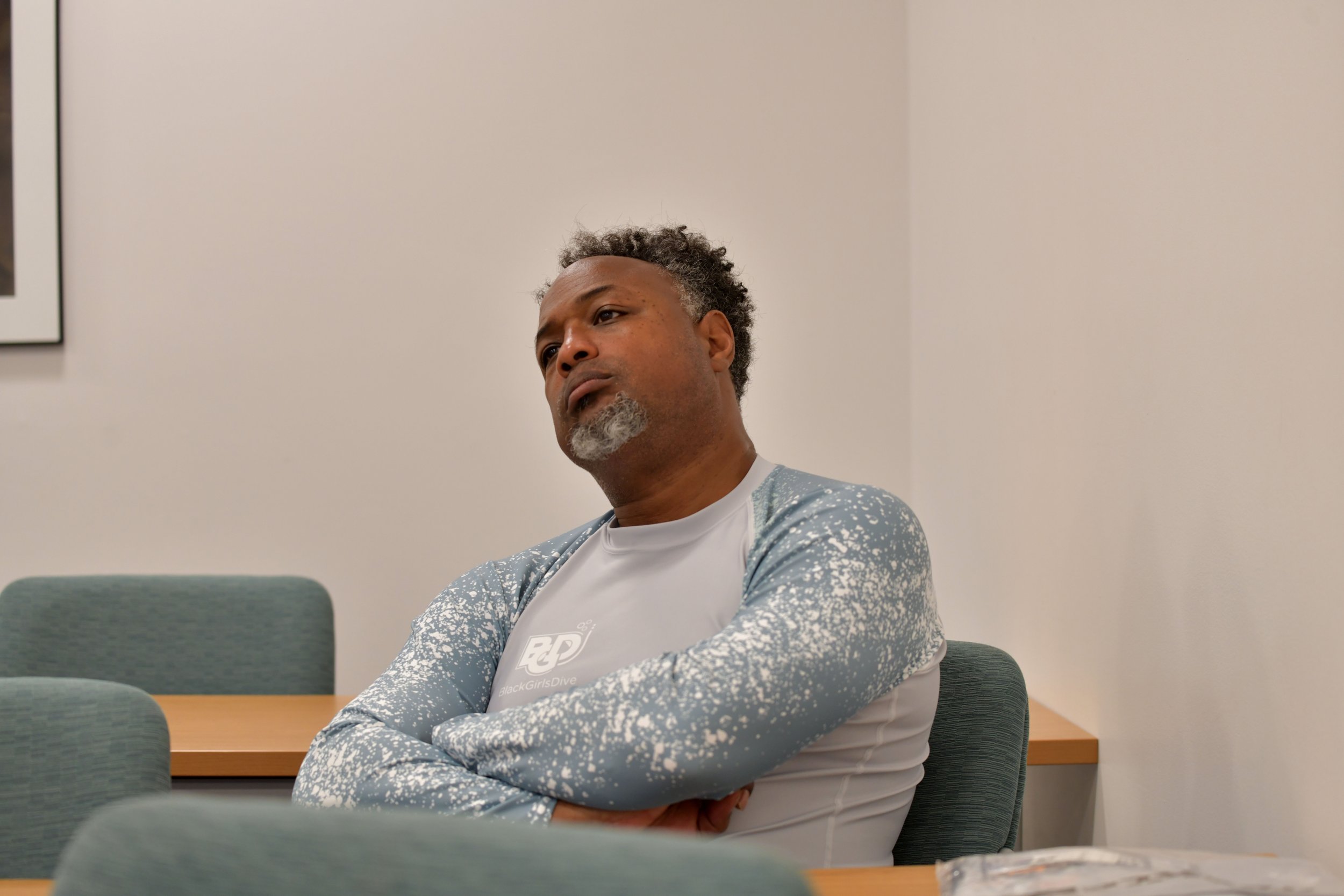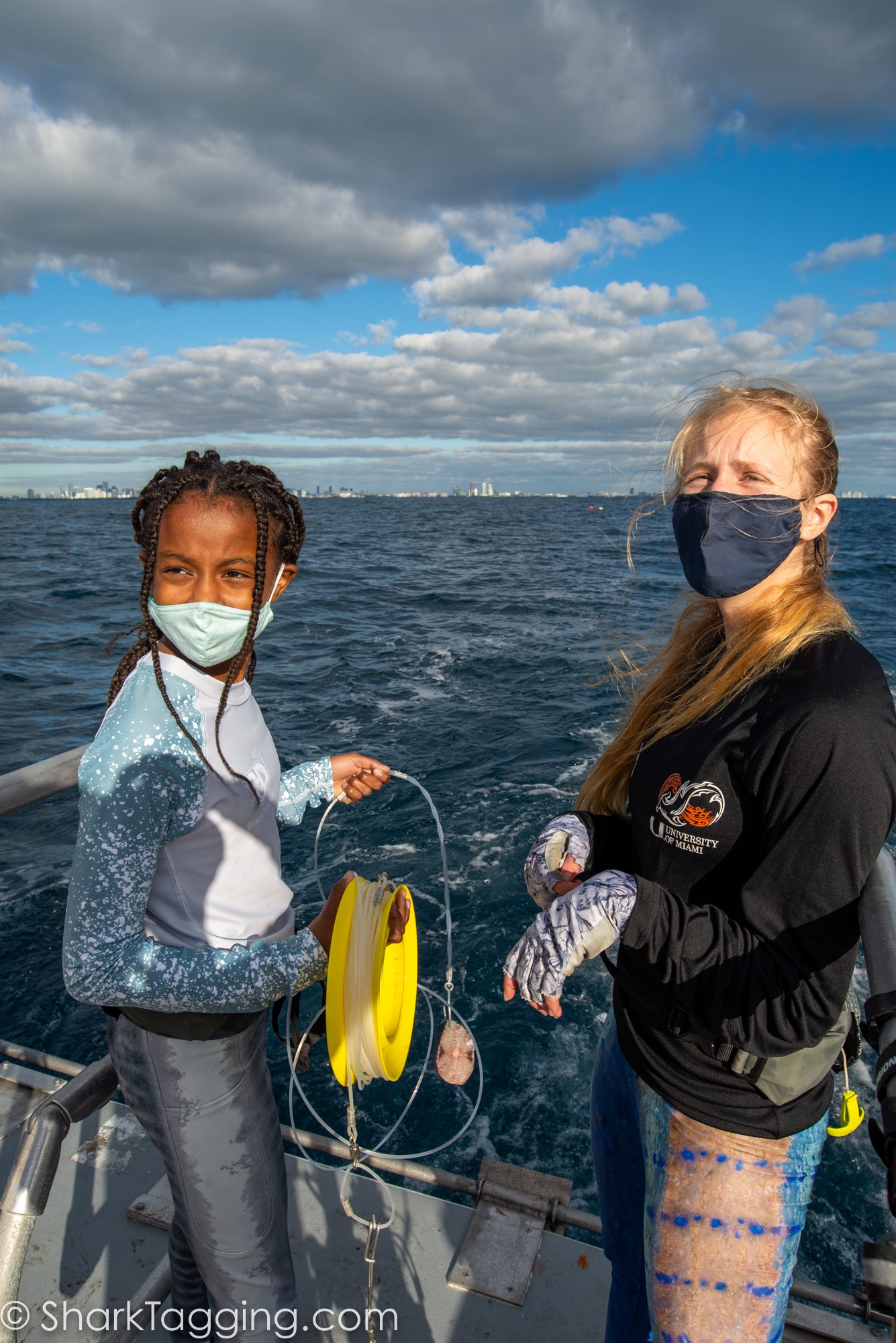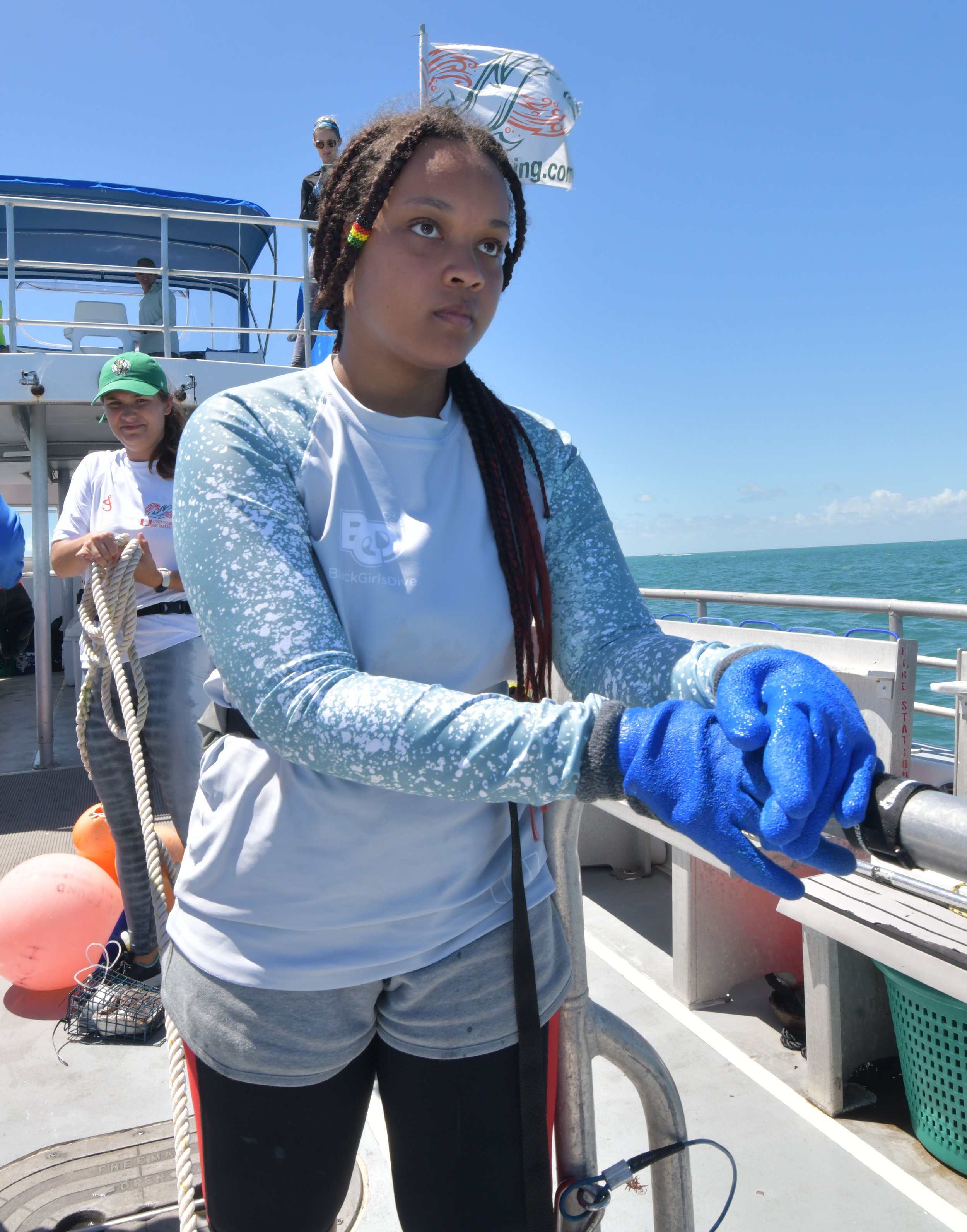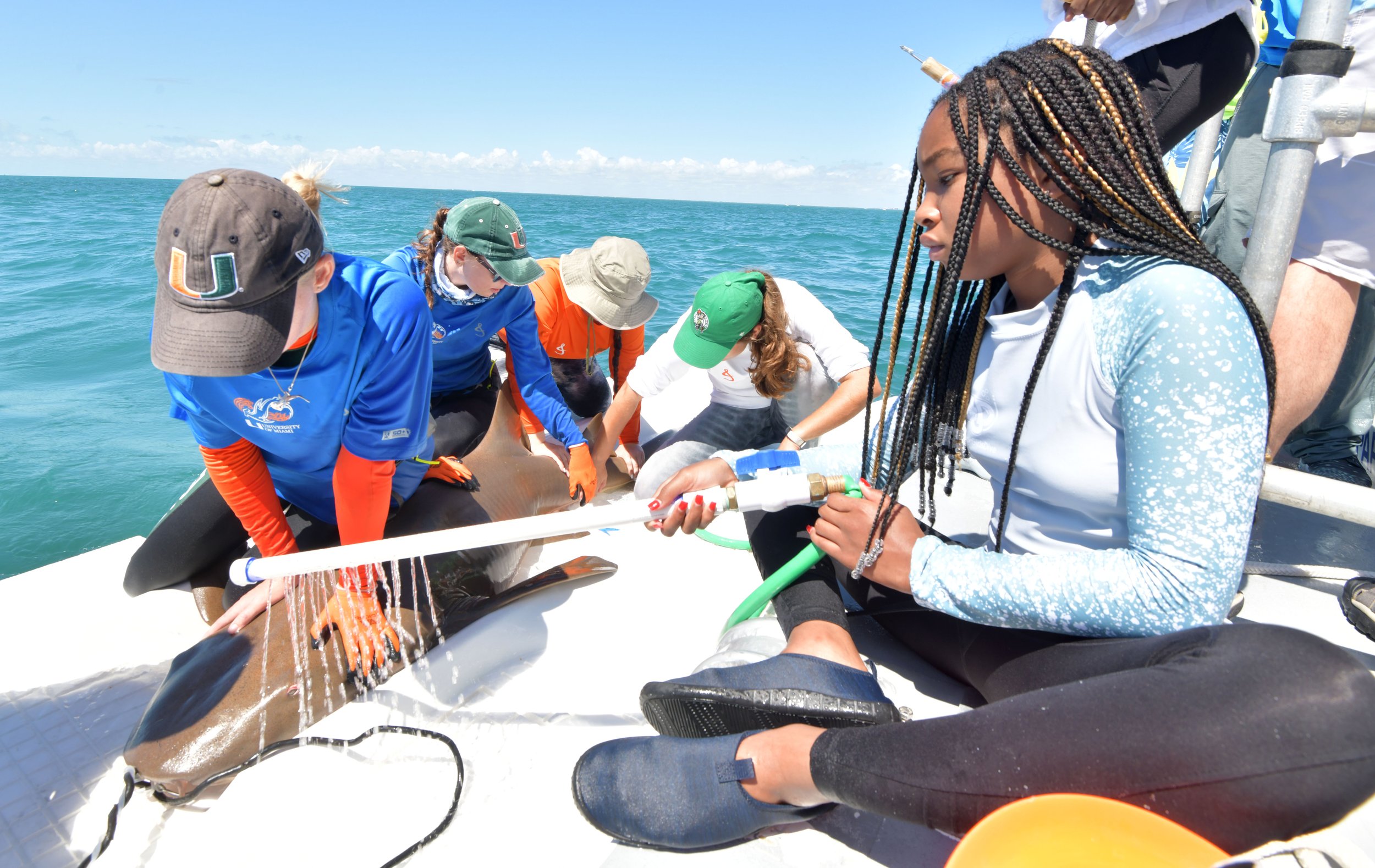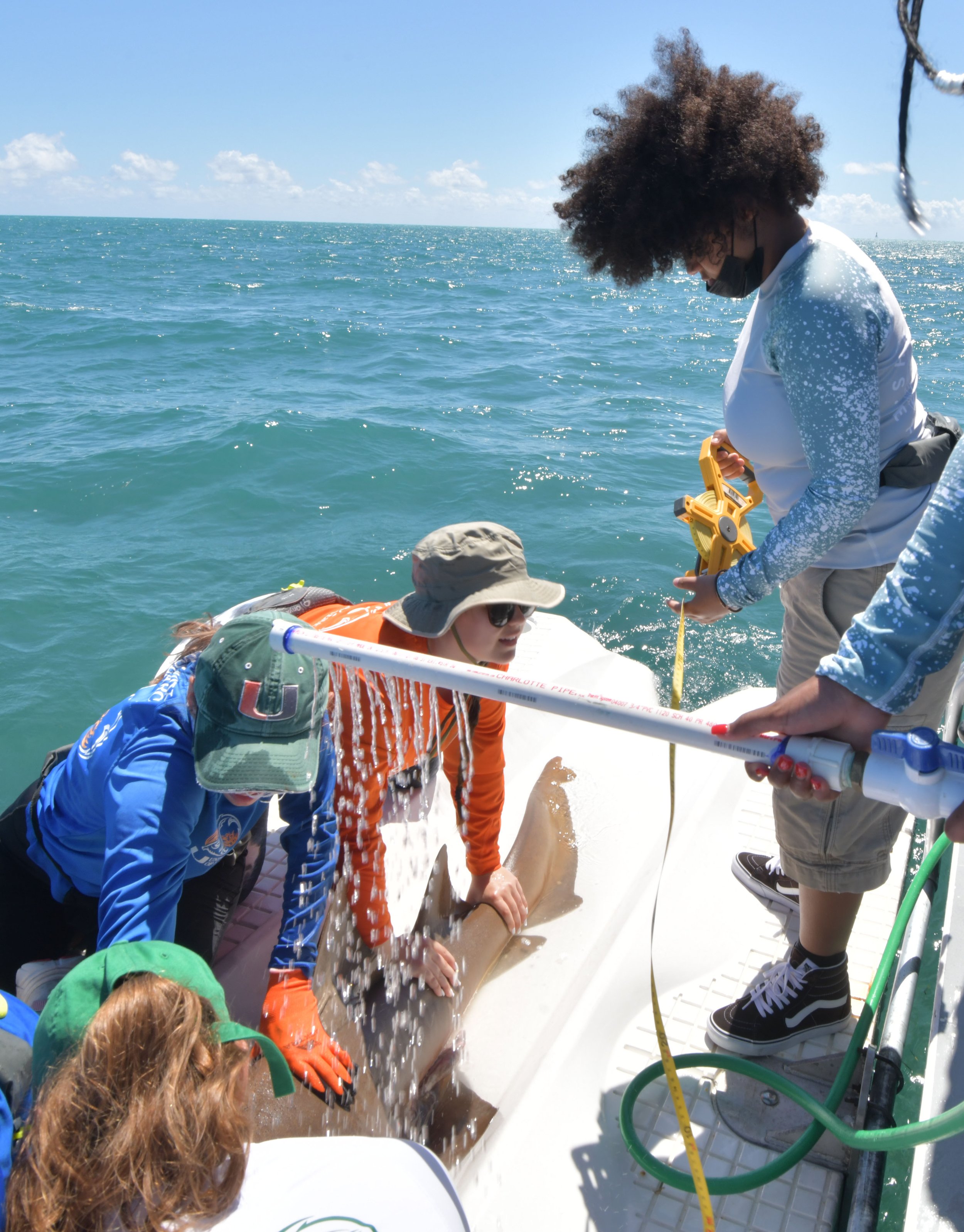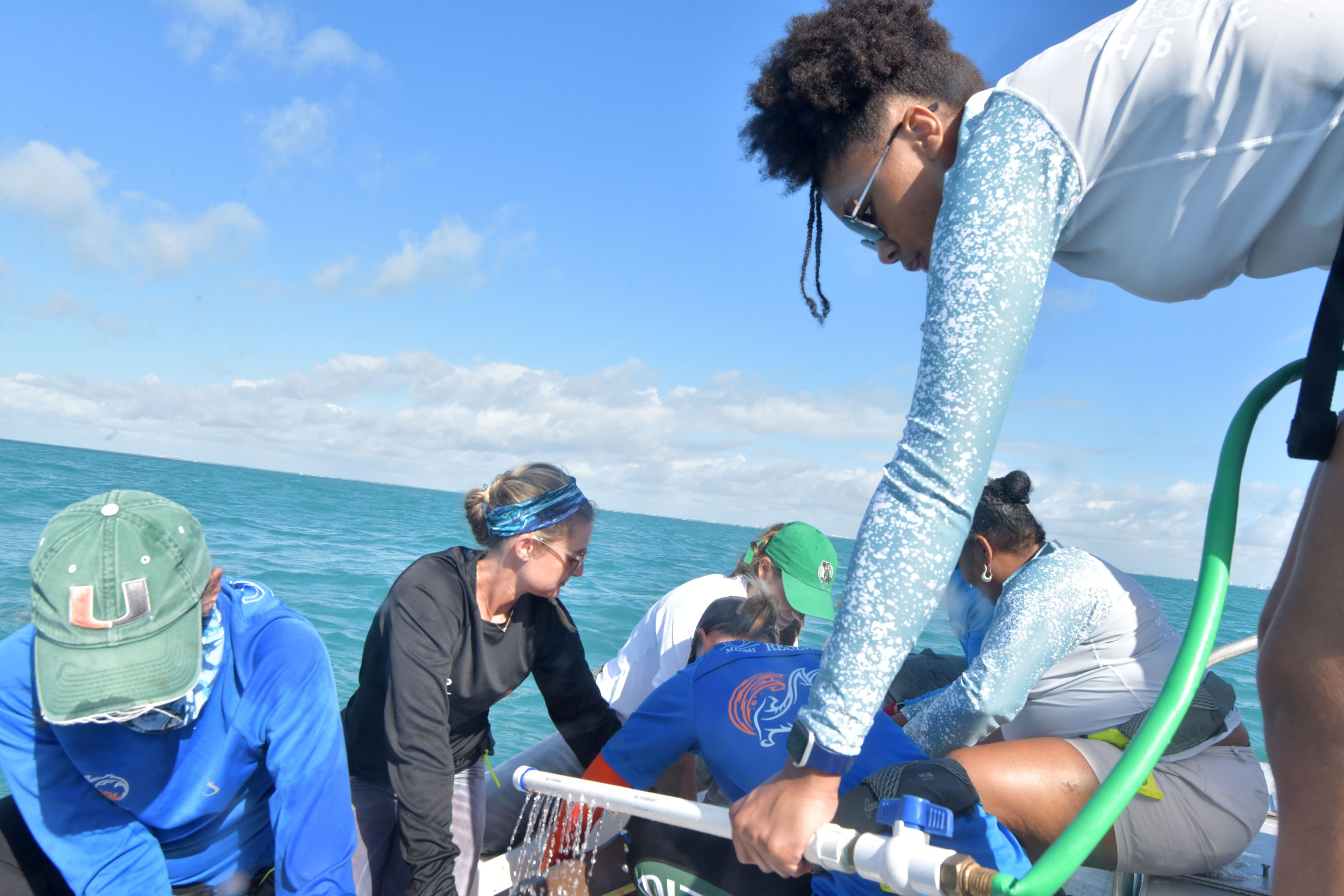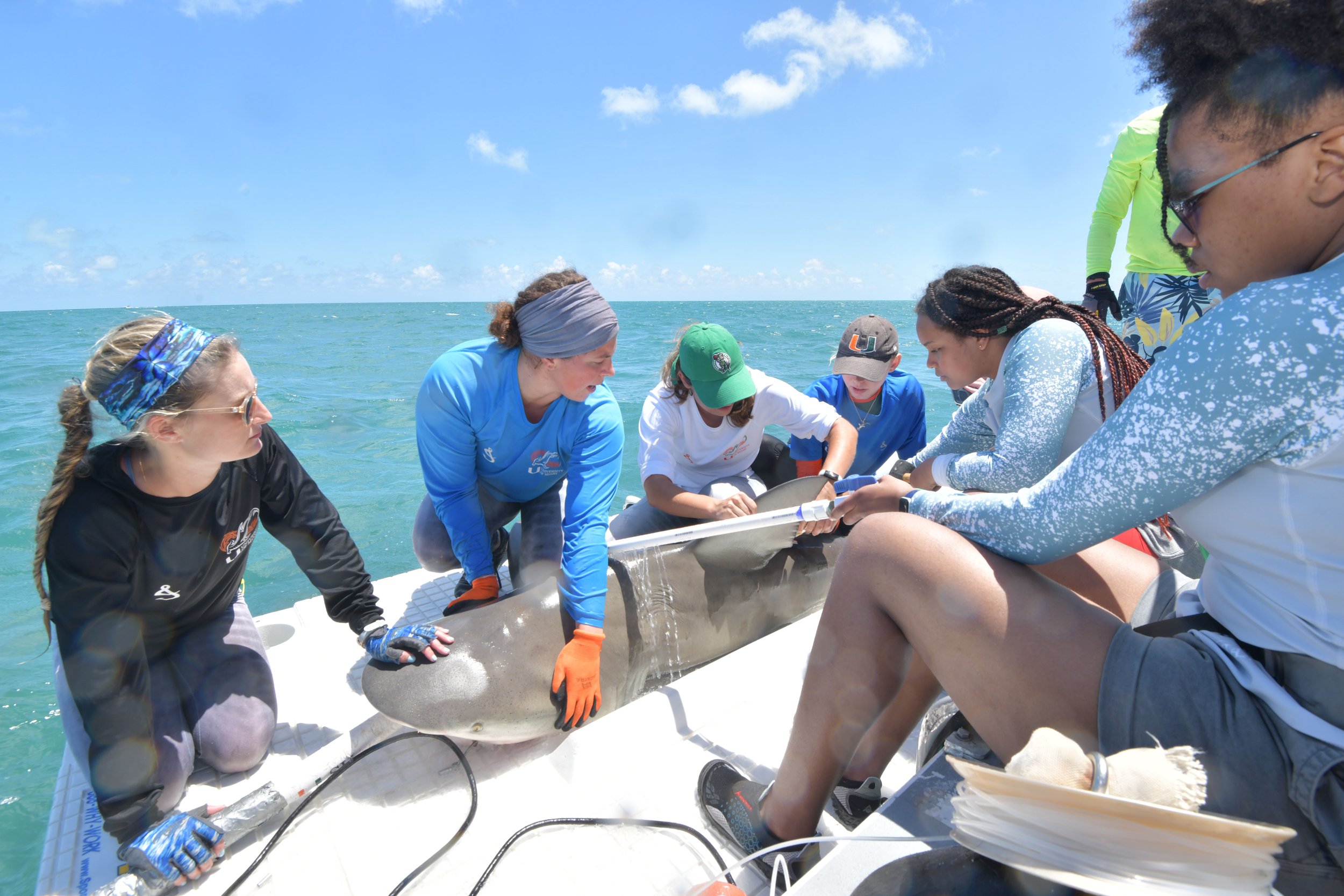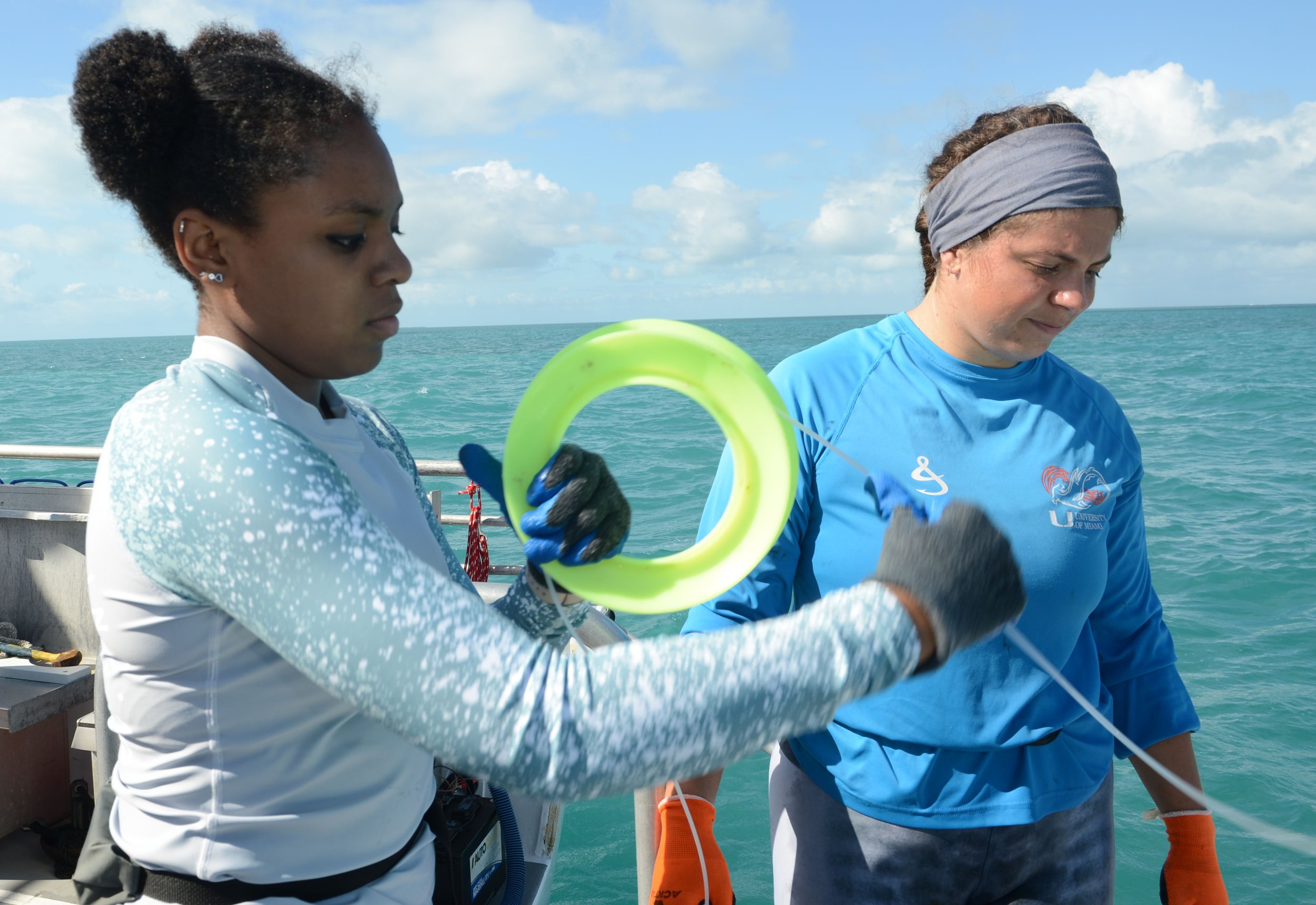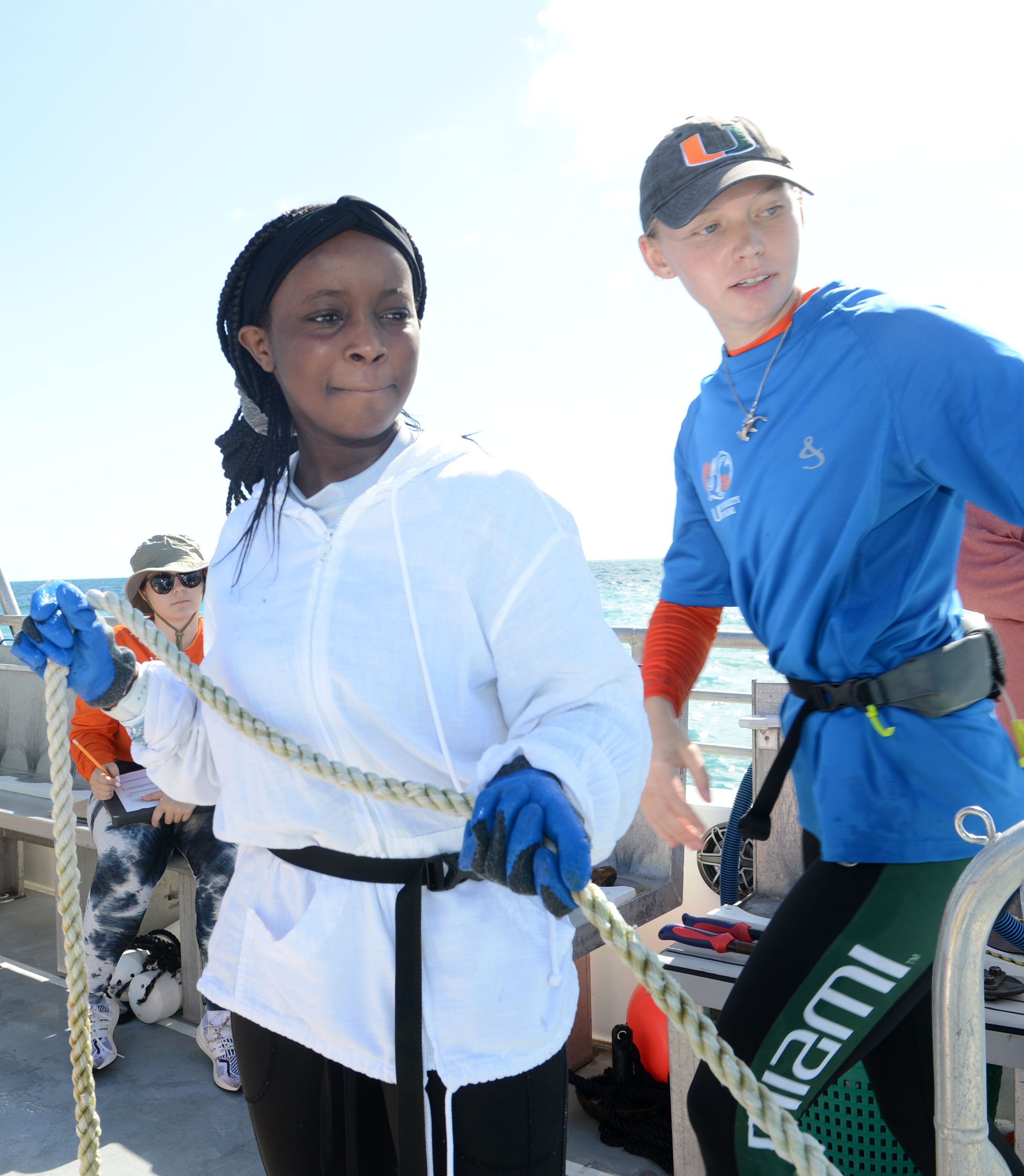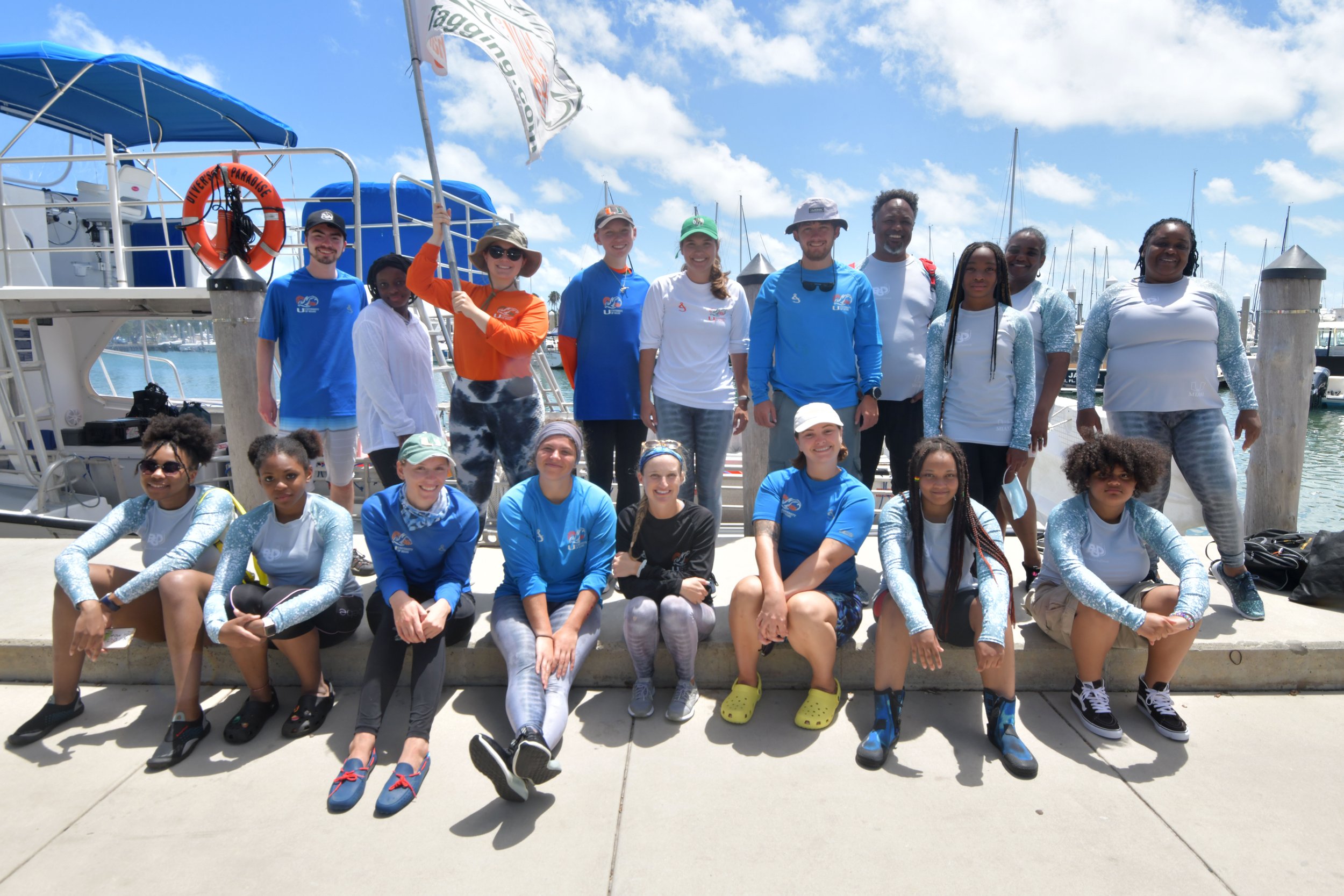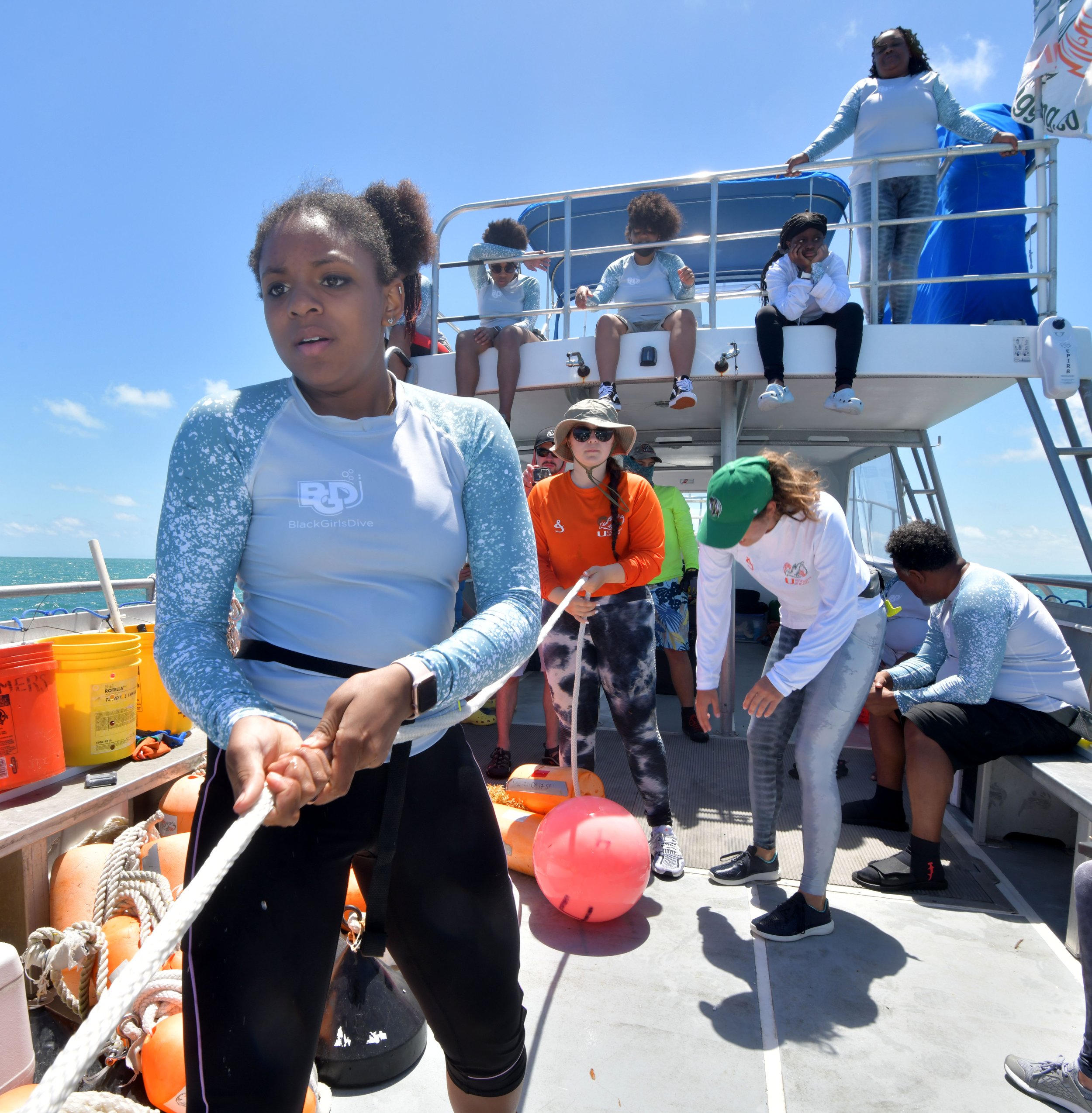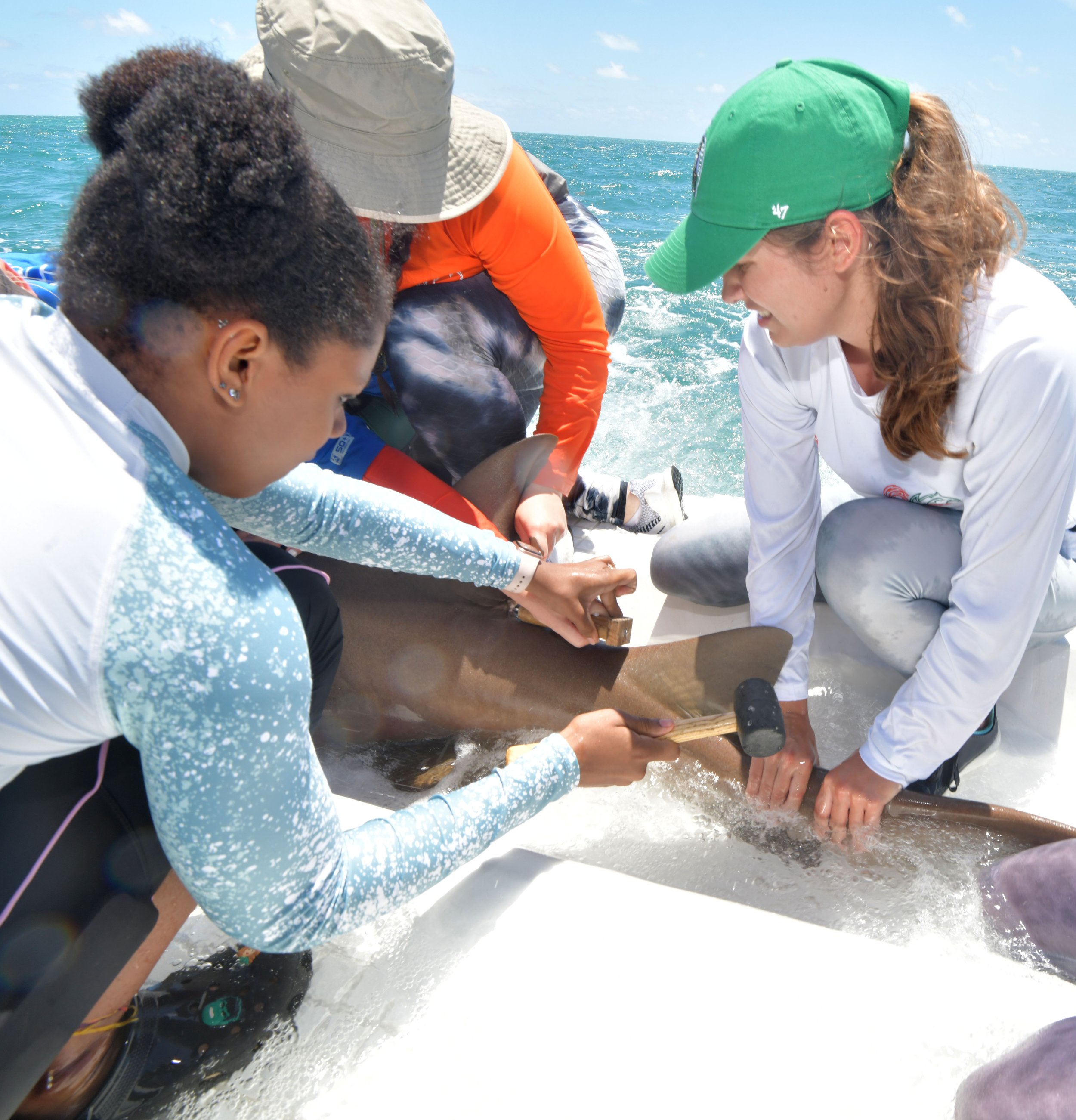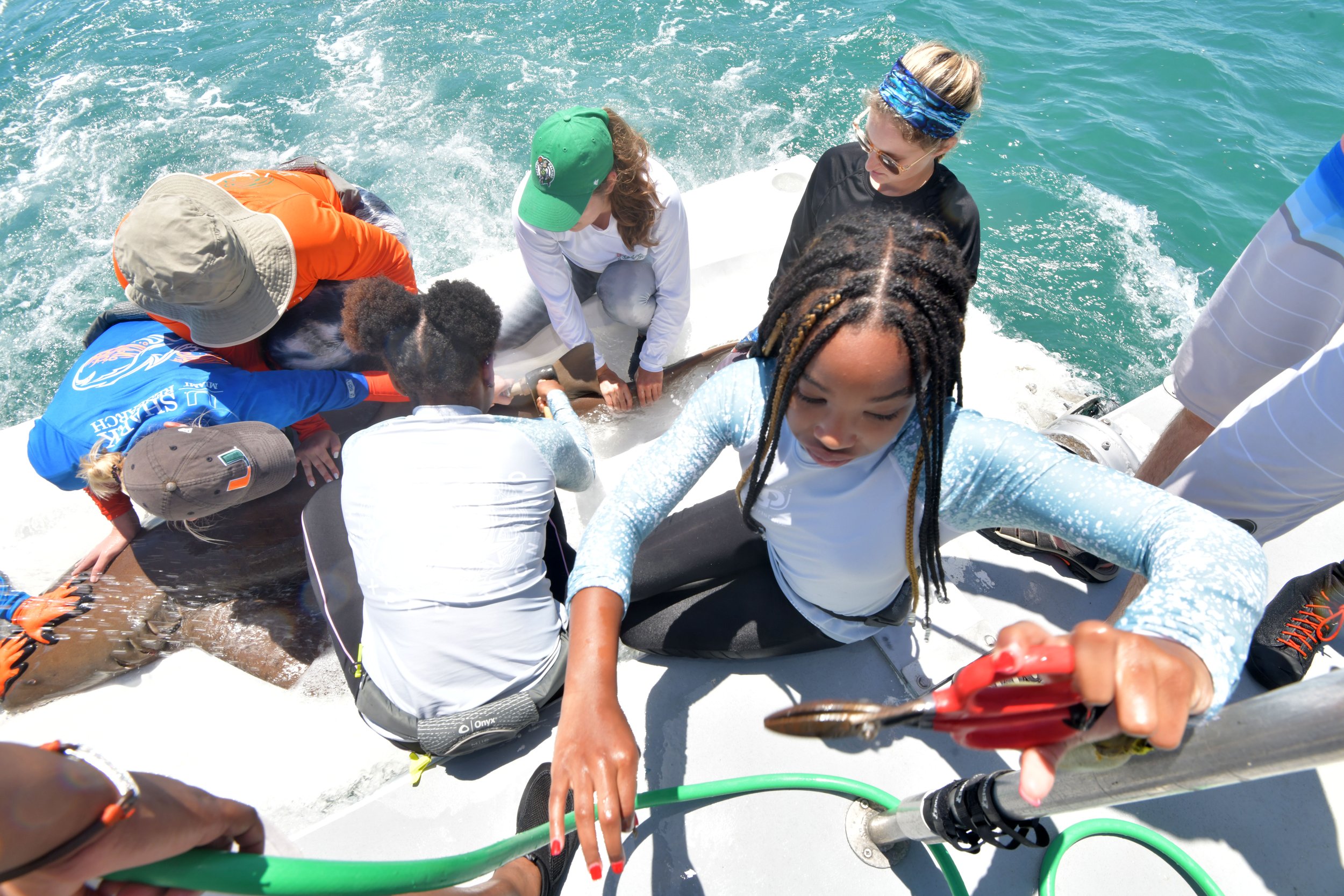Shark Research and Conservation
This Shark Research and Conservation initiative is a collaborative partnership with the Rosentiel School of Marine and Atmospheric Science - University of Miami that introduces participants to the world of Sharks. Through demonstrations and in-class exercises, students work with real shark biotelemetry data and are taught basic spatial analyses of shark satellite tracking data.
Shark Tagging Expedition Capstone
Through a field-intensive capstone, participants are given the unique opportunity to interact with sharks and be trained in advanced technologies used in shark behavioral ecology and conservation methodology, such as biotelemetry (i.e., satellite tags). Participants devote an entire day to field research; catching, tagging, and releasing sharks to study their abundance and movement patterns and learning about conservation and management.
Program Objectives
The objectives of the Shark Research & Conservation learning module is to provide participants with:
An introduction to shark morphology and the various shark species types.
A working knowledge of the research methods used to advance understanding of the shark conservation efforts.
An opportunity to contribute to the protection of biodiversity and ecosystem structure and function
An opportunity to explore social behaviors and symbiotic relationships between sharks and other organisms.
Space to explore their personal attitudes toward and knowledge of sharks.
Program Learning Outcomes
After completing the Shark Research and Conservation learning module and field experience, participants will be able to
Name species scientifically and identify based on morphological features.
Discuss reproductive strategies and evaluate how these and adaptive features relate to population abundance and survival.
Discuss threats to and conservation status of sharks
Discuss the tools utilized in shark conservation and utilize various tagging and tracking tools and the advantages and limitations
Explain how GIS is used in Shark research and conservation
Explain the role sharks play in the ecosystem and how humans play a part in their survival.
Dr. Neil Hammerschlagg conducts an ultrasound on a Bull Shark.
The team stabilizes a Nurse Shark and prepares to take measurements and tissue sample.
Sponsors

